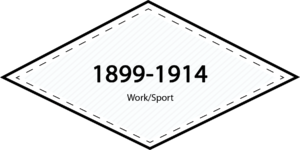
“The New Woman – at Last”
Sub-category of the Edwardian Era; when the “normal” woman went to work & escaped the house


—— ERA IN BRIEF ——
“Normal” for a woman now meant getting out of the house to pursue leisurely or work pursuits while wearing the clothes that could keep up with her. While the old Edwardians were still sipping tea, others were playing tennis or swimming the Channel, & they were accomplishing all wearing – you guessed it – clothing. It was not just your mother’s dress any more, but fashion gone in many directions. What began as simple tailoring for travel, ended up branded sportswear that’s still around today.
 —— HISTORICAL PORTRAITS OF REAL WOMEN ——
—— HISTORICAL PORTRAITS OF REAL WOMEN ——
SPORTS
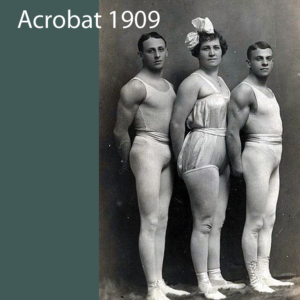


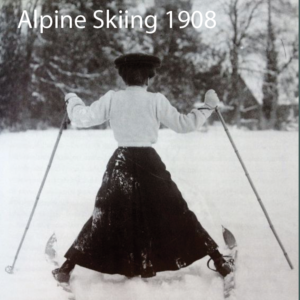
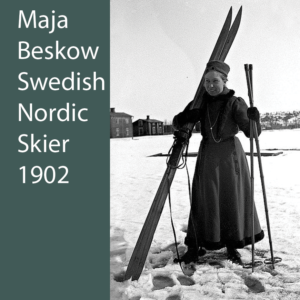
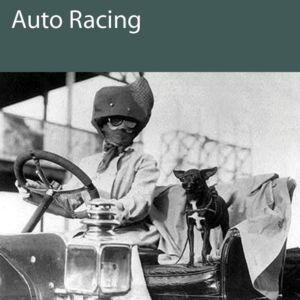

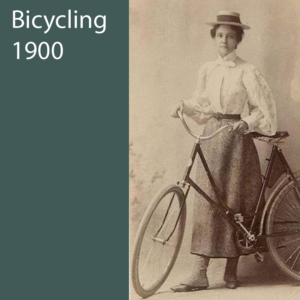
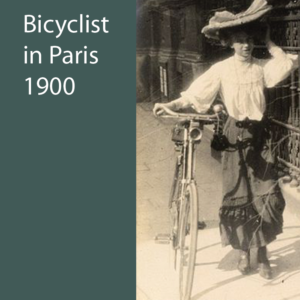
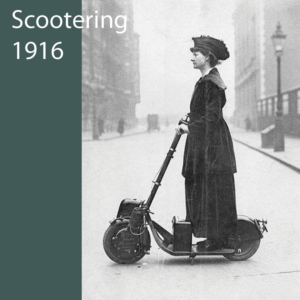
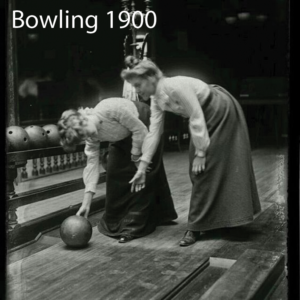
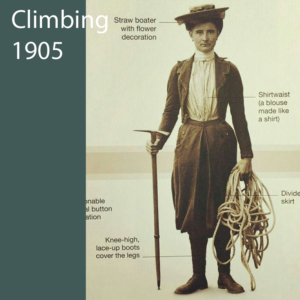
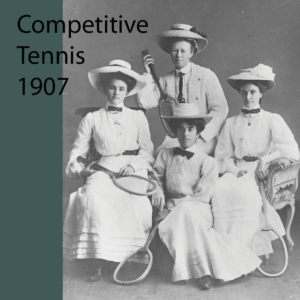
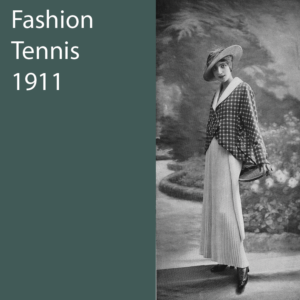
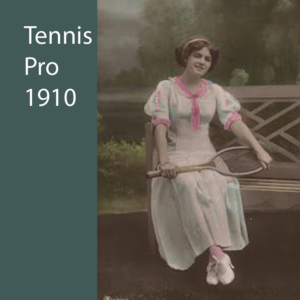
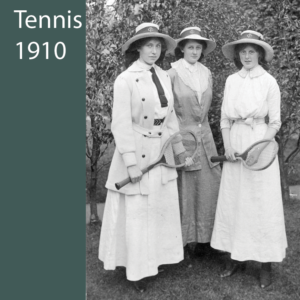
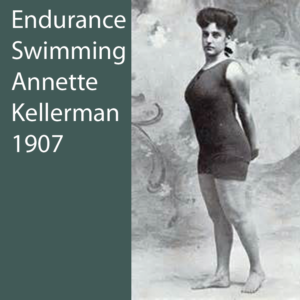
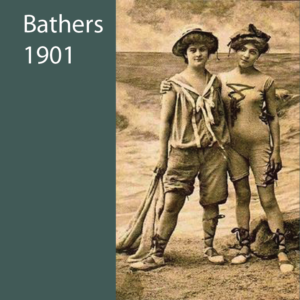
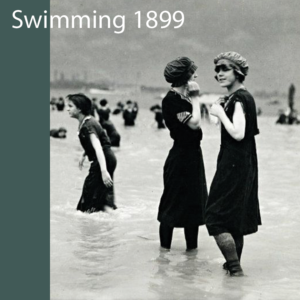
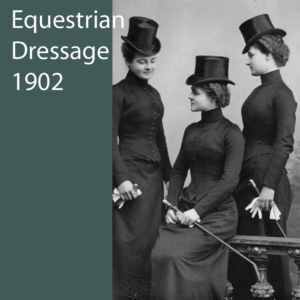
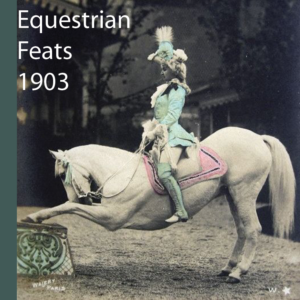
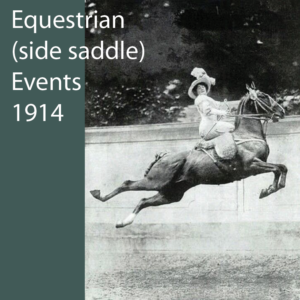
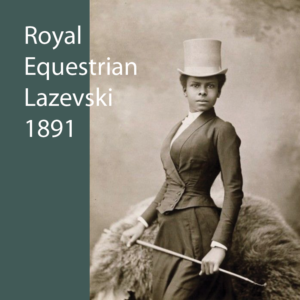
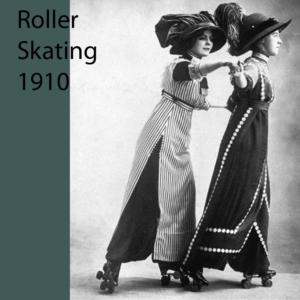
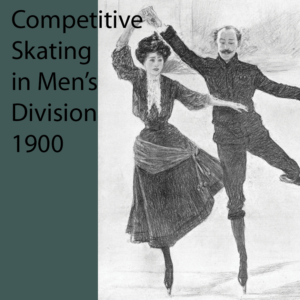
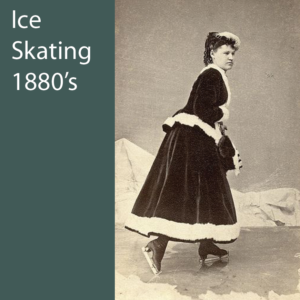
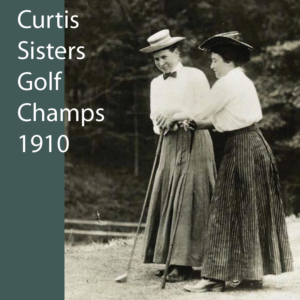
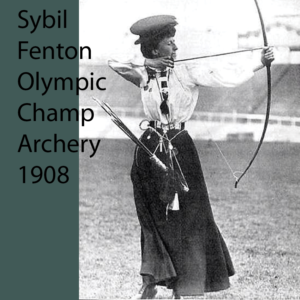
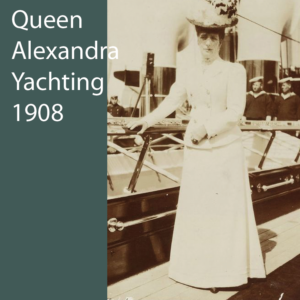

LEISURE
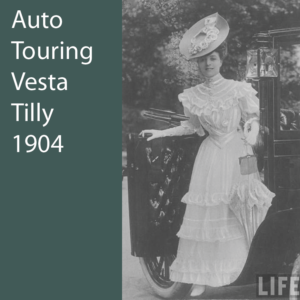
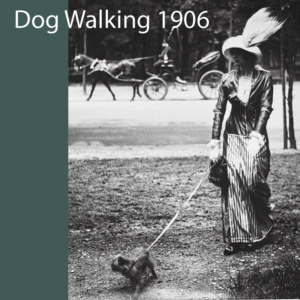
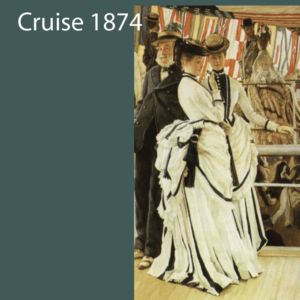
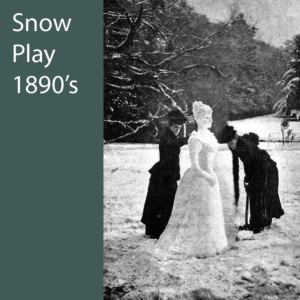
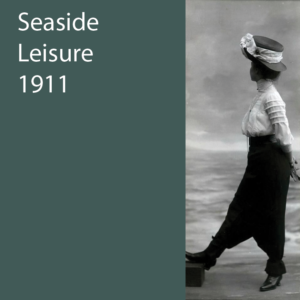
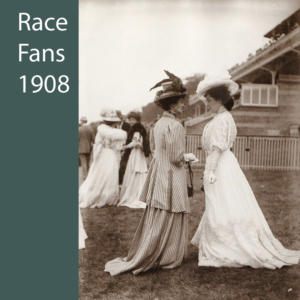
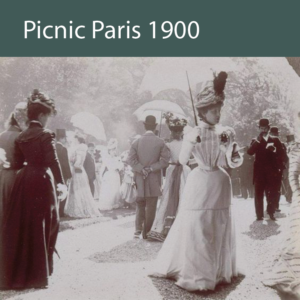
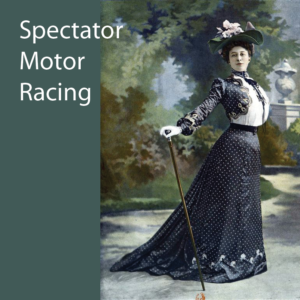
THE ARTS
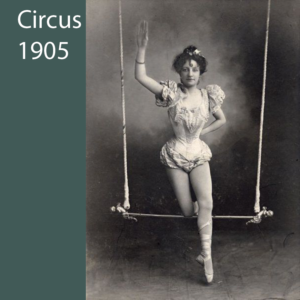
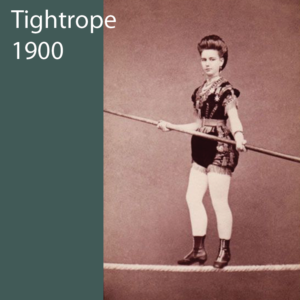

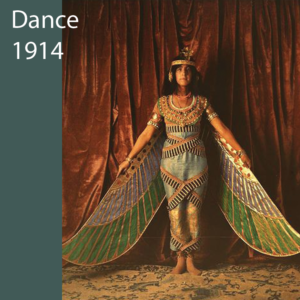
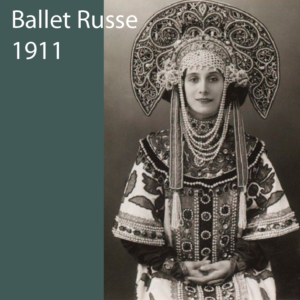
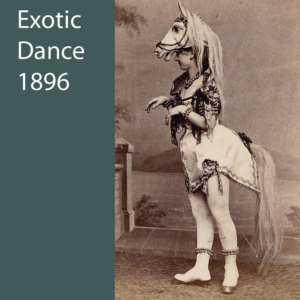
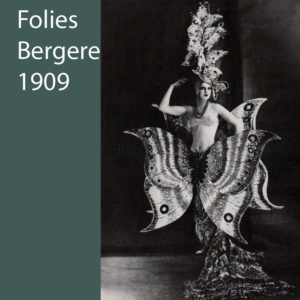
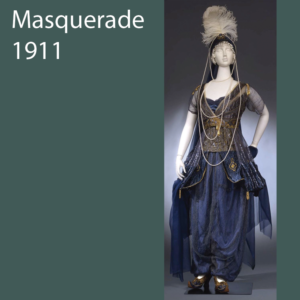

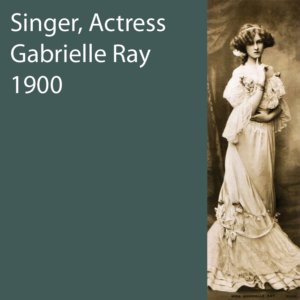
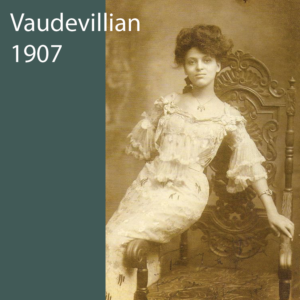
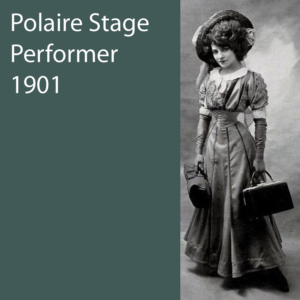
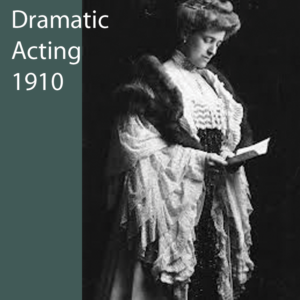
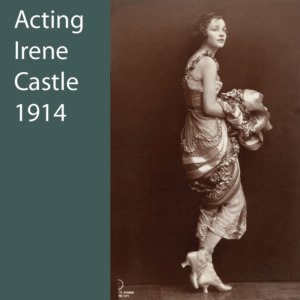
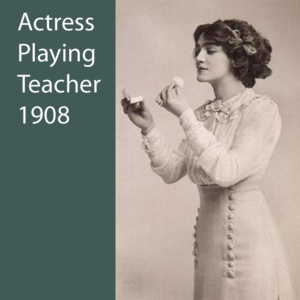
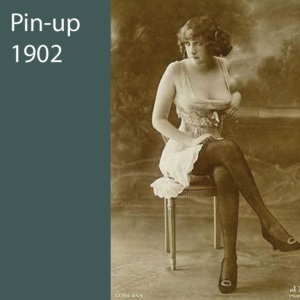
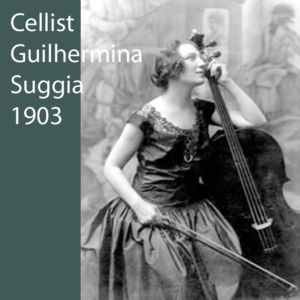
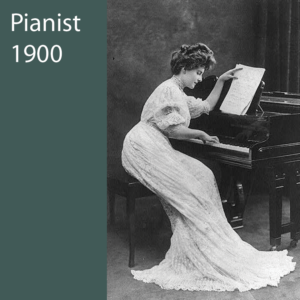
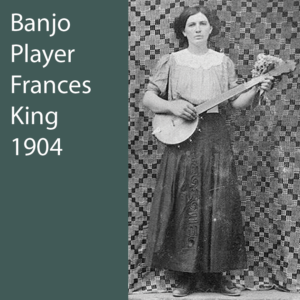
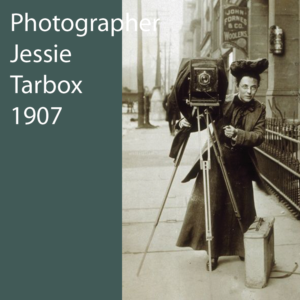
PROFESSIONALS
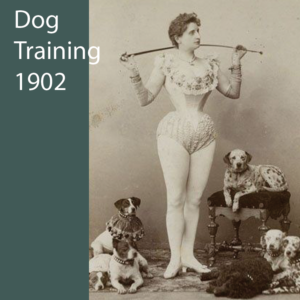
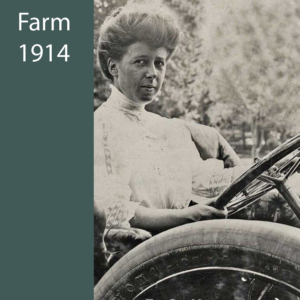
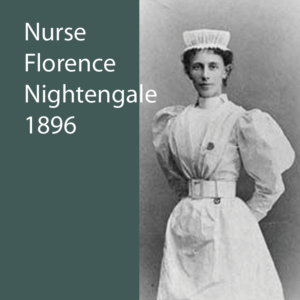
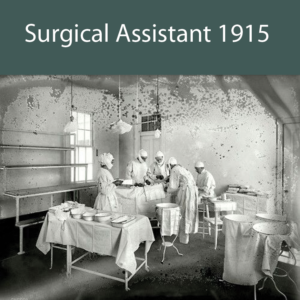
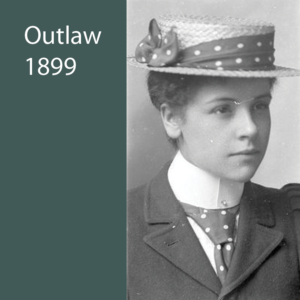
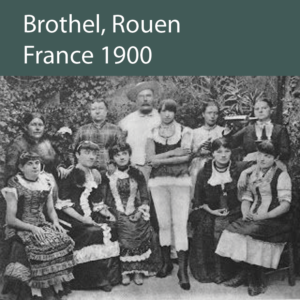
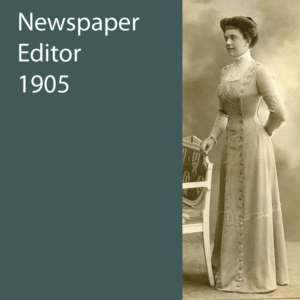
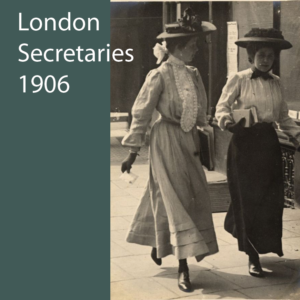
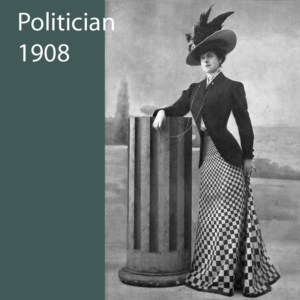
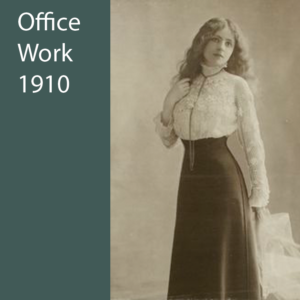
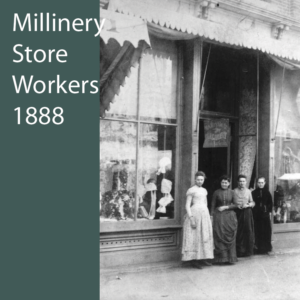
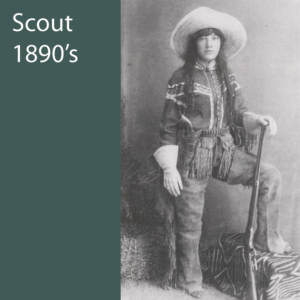
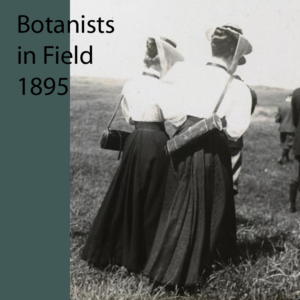
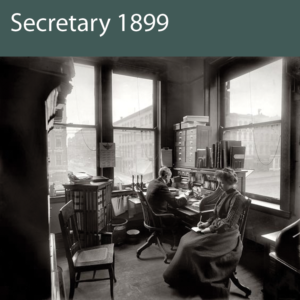
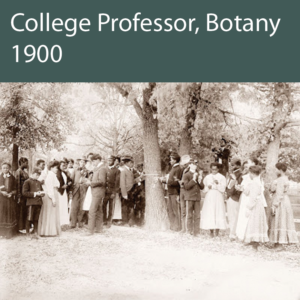
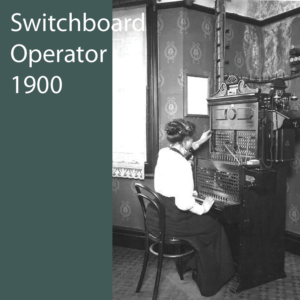
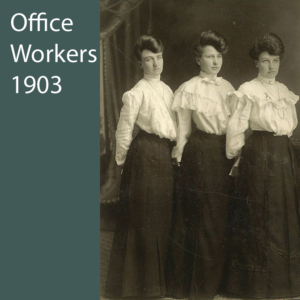
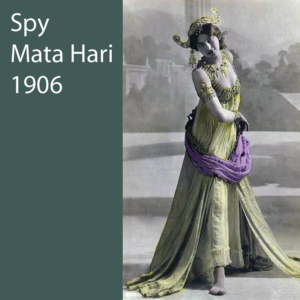
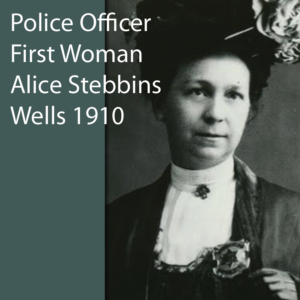
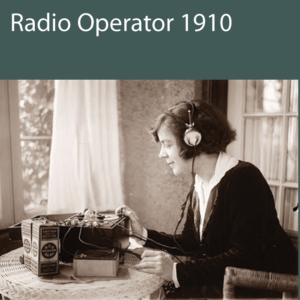
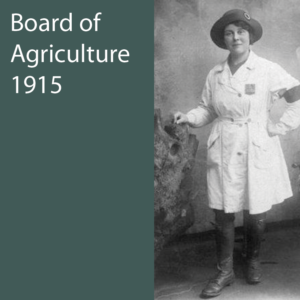
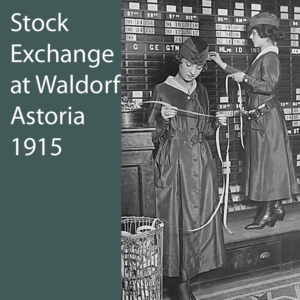
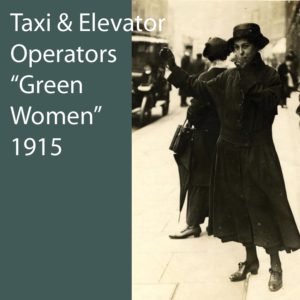
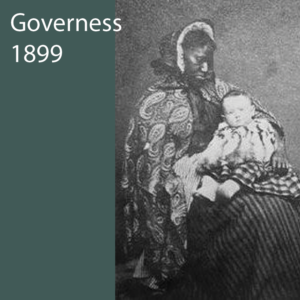
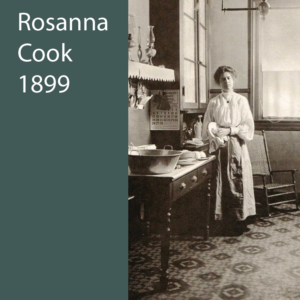
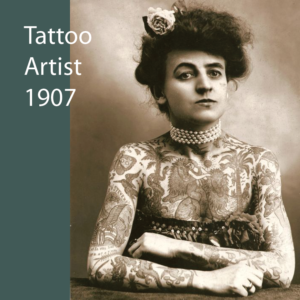
OTHER JOBS & OCCUPATIONS
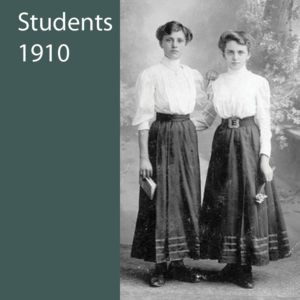

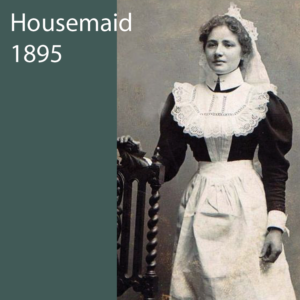
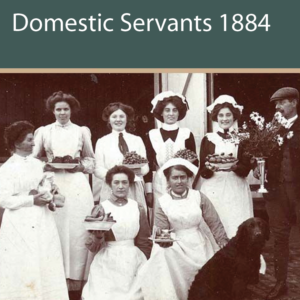
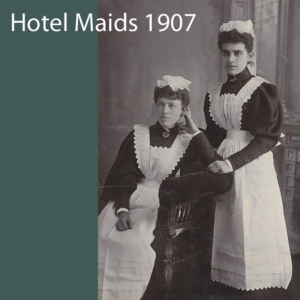
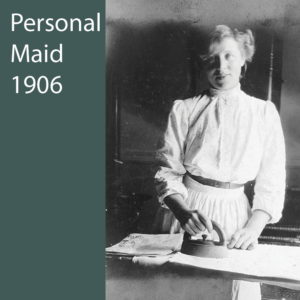
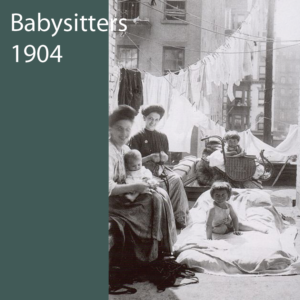
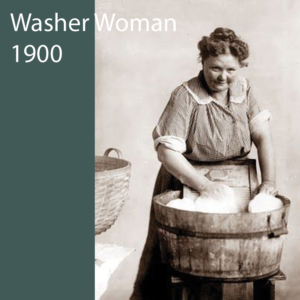
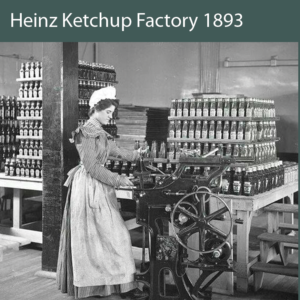
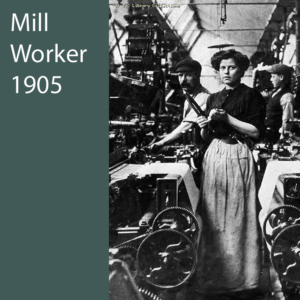
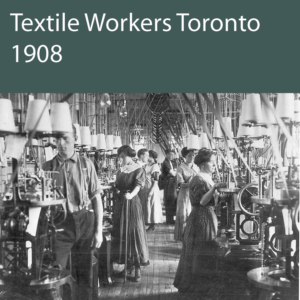
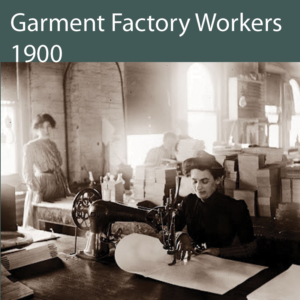
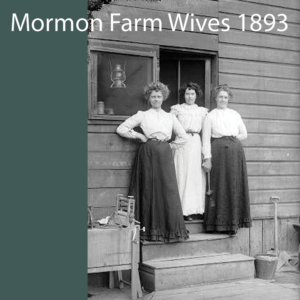
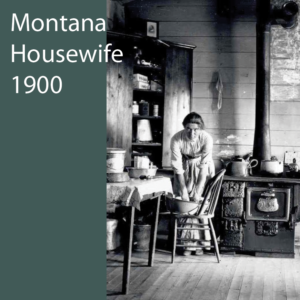

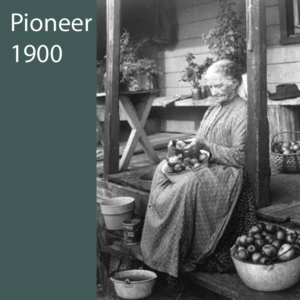
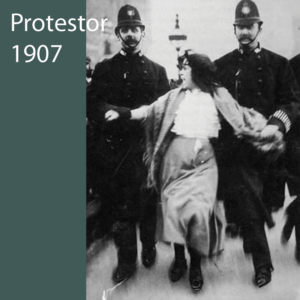
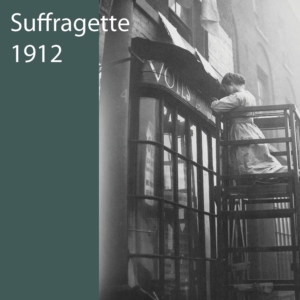
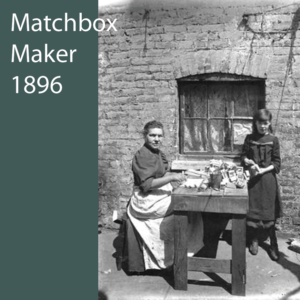
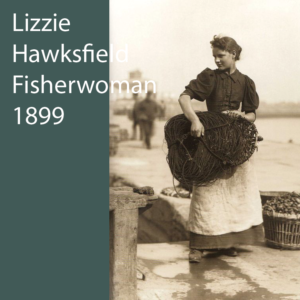
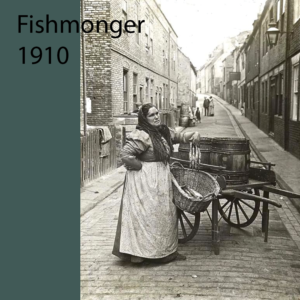
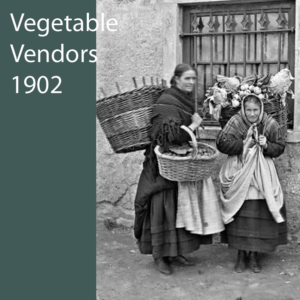
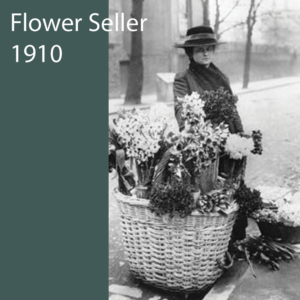
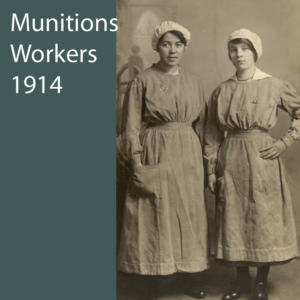

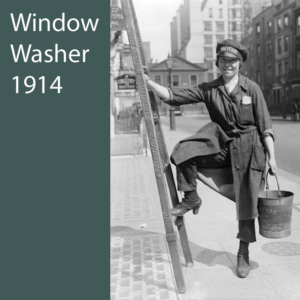
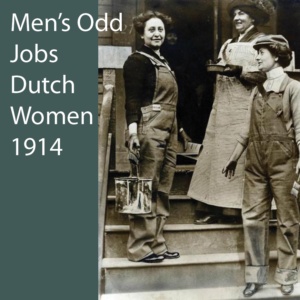
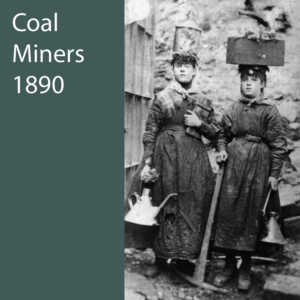
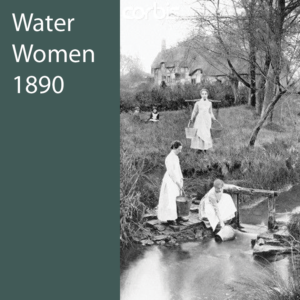
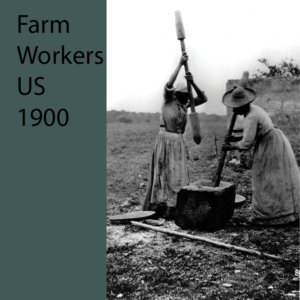

—— WORLD SITUATION ——
- “The New Woman” was ordinary
- This era was leading up to World War I which would create major change to all social, political, & economical patterns worldwide
- After the war, it would be socially acceptable for women to work for themselves or to support families
- Despite prevailing nostalgic attitudes & efforts to slow progress, change was happening very quickly & very openly
- The Edwardian era seemed almost a last attempt at controlling women’s behavior & roles through regimens & rules, in a time they were otherwise escaping the Victorian edicts & making great strides towards independence
- Women were being recognized as thinking beings with more to offer than being a social asset for a husband
- By 1900 the railway, typewriter, telephone, post office, camera, sewing machine, rayon fibers, & bicycle made life for most women much easier, & allowed them the luxury of leisure or work pursuits
- For yet more women, the daily use of gas, water, electricity, & the motor car changed their lives significantly
- Since everyone – both men & women – had to figure out new inventions & how to use them, women achieved a status equal to men in many places
- Intellectual equality applied to women & men of all classes & status
- This dynamic of change for all persons changed the status of women overall
- Reform in political & social realms began as intellectual female thinkers began to outwardly state their case; e.g. many joined the Fabian Society, a group of non-revolutionary thinking socialists & similar groups
- Other women sought reform for more practical dress, better education, the right to have paid work if they wished, & better employment prospects for poorly paid women
- Most importantly, women campaigned for the right to vote & to obtain birth control, although most would not live to see those implemented
- During the WWI effort, women donated their corsets to yield 28,000 pounds of steel
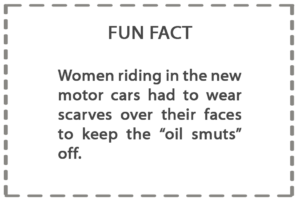


—— INTERESTING FACTS ——
 WOMEN & WORK
WOMEN & WORK
- By the early 1900’s, more & more women were earning livings as governesses, shop assistants, & typists
- Women needed clothing to adapt to many situations & to be flexible for different activities
- The clothing industry was the 2nd largest employer of women, next to domestic service at this time
- It encompassed a wide range of jobs including dressmakers, shirt-makers, underclothing makers, milliners, hatters, glovers, hosiers, straw bonnet makers, collar makers, tailors, pattern-makers, & shoe/boot makers
- Women also made accessories including embroidery, lace, gaiters, fur, & feathers
- In 1871 in Britain there were 300,000 women working in the clothing trades. This number nearly doubled by 1890
- By the 1850’s clothing was still in the hands of small traders such as milliners & dressmakers who were the high end of “needle employment”
- These professions continued into 1900 to exist to serve the new Edwardian lifestyle & it’s demand for quality that could not be achieved through mass production
- Successful “needle women” had assistants & apprentices. A good business woman might have a workshop or store built on to her house
- Due to the increased costs of establishing a business, & the separation of work in factories, fewer girls were going into the clothing trades as time went on, making those still working more value, yet undermining the ability of dressmakers to do quality work because they were short of help
- Millinery, for example, took 7 years of unpaid work during which time the apprentice was required to pay fees. It was therefore always a father’s decision whether to pay for his daughter to be apprenticed. Many fathers of the time did not want to invest that much in a daughter
- Being a day-worker or journeyman in the clothing trade was not lucrative because every girl was taught to sew, & sewing was always the first resort if a woman needed to earn money
- Sewing was a convenient job a middle class woman could take up without loss of face or status
- Because of the high availability of labor, hours were excessively long & pay very low in the garment & textile industries except for those at the very top, such as the Haute Couture houses
- Upper class ladies still kept a few top quality dressmakers well employed in creating, ornamenting, mending, & altering garments
- Manufacturers of headwear did a roaring trade, selling ready-made as well as custom orders to all price points & classes
- As well as hats & bonnets, a milliner made caps, cloaks, mantles, gloves, scarves, muffs, tippets, handkerchiefs, petticoats, hoods, & capes
- During an 1834 tailor’s (men’s) strike, the local needlewomen took up the dropped work. Refusing to give the work back to the tailors after the strike, the women continued as tailors, many marrying the men who then worked as their assistants
- Stays & corset making throughout all eras & situations, however, remained strictly a male enterprise due to the considerable physical strength required until equipment was invented to take on the heavy work of hand sewing
- Women who went into corsetry employed men to work for them, & typically they were family run operations
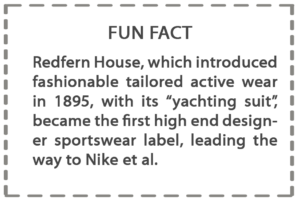
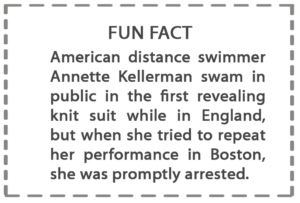

—— FASHION TRENDS ——
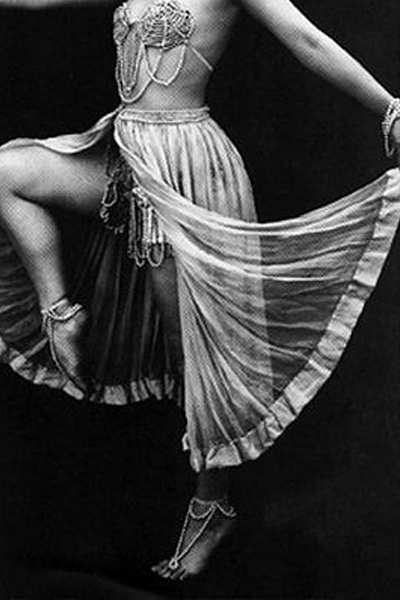 CHOOSE WORK OR PLAY – THAT’S ALL
CHOOSE WORK OR PLAY – THAT’S ALL
- This era is a part (subcategory) of the Edwardian era
- One would expect with the emancipation of women, that clothing would divide itself into work, activewear, leisure wear, & evening/formal wear as it is today
- Clothing of the 189-1914 Edwardian era realistically divided between 1) those who worked or were active; 2) those of leisure or who didn’t work
- The latter were the true “Edwardians”, including the high fashions of “La Belle Epoque”, “Art Nouveau”, “Titanic”, & “Gibson Girl” in which you could not do much more than look good
- The first, work & active wear tended to divide itself into two categories: 1) The “suit”; 2) special activities & “Reform” or “Sanitary” comfortable garments
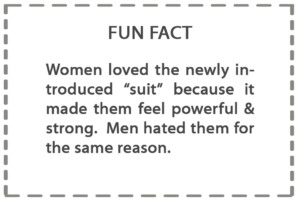
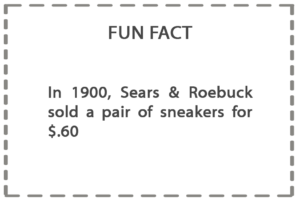
SUITED FOR WORK – WORK WEAR
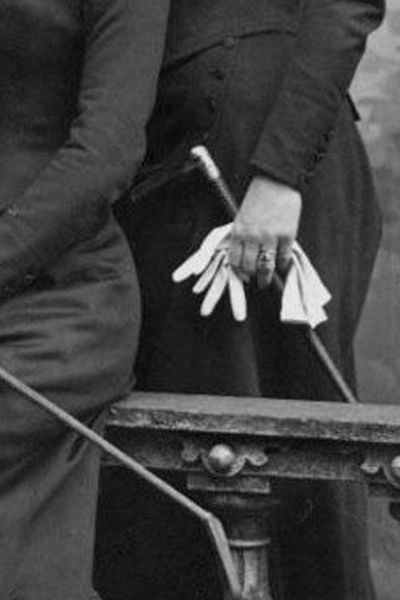 THE SUIT IS BORN TO THE WORKPLACE
THE SUIT IS BORN TO THE WORKPLACE
- The tailored “suit” was introduced at this time
- It was first developed for yachting, but quickly became the accept work uniform
- Later versions became acceptable for leisure & social pursuits as well
- Working women found the suit a useful, all purpose outfit for the commercial workplace
- They could be made of different fabrics for different purposes, could be worn with extreme corsets (or none for the daring), had layering for seasonal comfort (all layers being socially acceptable), & were cheap & easy to obtain from mass produced sources
- A woman didn’t have to have help to get dressed in a suit
- Women of all classes & occupations looked about the same wearing one. Class distinction blurred because of suits
- For exactly the reasons many women loved them, others hated them
- Suits were thought at the time to be unladylike & masculine
- Women wore suits as a clear statement that they deserved & wanted independence
- Men hated thought suits were a challenge of their authority
- The Elizabethan elite thought the suit demeaned women in the same way work did
 THE SUIT GETS OUT ON THE TOWN
THE SUIT GETS OUT ON THE TOWN
- High Fashion houses in Paris, seeing potential sales in the direction the suit was going, modified suit design
- “Belle Epoque” designers, especially the House of Redfern who had introduced the concept for boating & riding, marketed, & made the tailored suit fashionable
- The improved the construction, fabrics, & details, giving more choice & variety
- Designers added the “shirt waist” (today’s “blouse”) to the design which replaced revers & chemisettes to make all of the ensemble fully functional & flexible for the situation or weather
- The “suit” with “shirt waist” added, became fashionable & popular for not only for work during the day, but also for travel, evening wear, country wear, & general daily use
- Middle & upper class women wore suits with shirt-waist blouses
- Lower classes & rural women wore suits with a basic bodice & skirt early in the era. Later they wore just the blouse & skirt
- Suits were ideal for traveling because they were so versatile & worked well in a variety of situations from sitting on a train to meeting for tea
- Social attitudes were changing which accepted the suit to even social functions such as the theatre, but with some rules; e.g. Sarah Bernhardt, actress & theatre owner, allowed the suit as evening wear, but required men & women to remove their hats


READY MADE TO PLAY
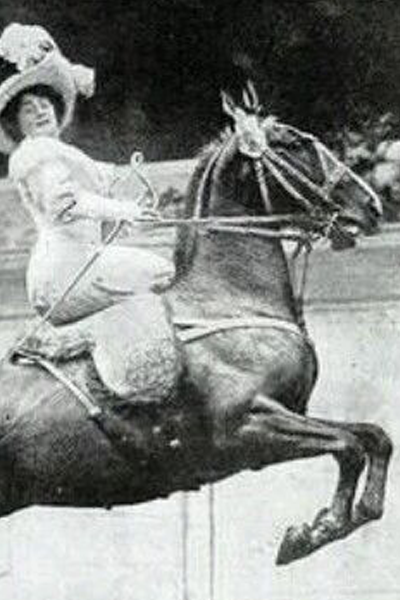 ACTIVE WEAR COMES OUT TO PLAY
ACTIVE WEAR COMES OUT TO PLAY
- The move towards emancipation combined with the growing popularity of sport added impetus to the movement for functional fashion
- The concept of active wear had started with the “Pre-Raphaelites” & “Aesthetic” movement
- Evolution of those earlier movements & demand for rationalization or “Dress Reform” in women’s clothes rose at this time under leadership of strong minded women in Germany, England, & America
- By 1915, the mindset had completely accepted activewear or “sports costumes” as they were known then
- There were two types, 1) the Amelia Bloomer “bloomer” Turque & Eastern inspired gym suits, & 2) the tailored sport suit invented by the Fashion House of Redfern in Paris
 SUITED TO SPORT
SUITED TO SPORT
- Based upon menswear & military ensembles of the day, & taking reference from menswear in history, the result of the Redfern sports suit was a tailored & ‘masculine’ style
- Riding habits in particular had always been masculine of necessity, & it had been acceptable for women to stray from the fashion norm of the day since the 17th century when they could sit side saddle
- Much like today’s women’s horsemanship “dressage” ensemble, the Redfern Riding suit had a tailored skirt that was significantly shorter than the current fashion, optional draping for side saddle, jacket/bodice with military type buttons, undervest, optional pants, & was completed with a top hat with feather
- Between 1870 & 1900, the largest spurt in the growth of women’s sports for the wealthy added yachting, shooting, riding, & hunting
- Previously resigned to utilitarian wear, finely tailored dresses & suits introduced by Redfern became a craze among sporting aristocrats for everything from sailing to riding to playing cricket or croquet
- The masculine short-skirted suit look was most apparent in those sports of yachting, shooting, & riding, in which women had been participating as equals for some time, although wearing long skirts up until now
- Sports for the middle class included many which had only been available before to the wealthy including croquet (replaced by tennis in America in the 1870’s), archery, golf, hockey, & cricket
- Ice skating in winter, & roller skating in summer were acceptable forms of exercise for all classes
- A Redfern yachting suit was the most recognizably English mode of fashion apparel of its day
- Redfern was wildly popular in the United States, & they had a store in New York City
- Redfern was really the first high end sportswear brand
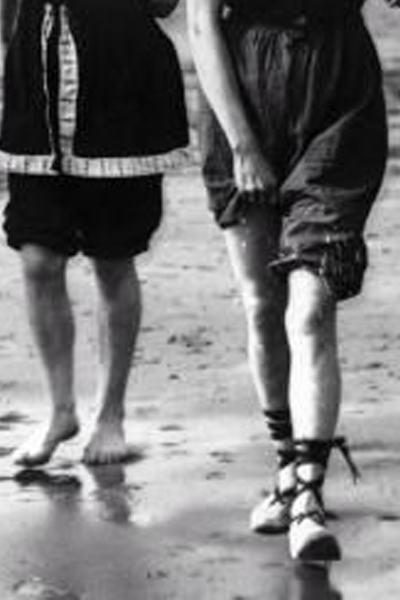 GYM SUITS & BLOOMERS
GYM SUITS & BLOOMERS
- Necessity of movement in the more active sports of cycling, tennis, golf, & similar now required more breathable, moveable designs, fabrics, & construction of garments than a suit could provide
- Specialty garments were needed for women in particular, because while they were very good at it, it was getting harder & harder to become an Olympian wearing long flowing skirts & corsets
- This meant that while beauty was admired & desired at exactly the same time per the “Cult of Beauty/Tailor Made” (discussed separately), practical clothes were the norm – meaning – most people wore simple, practical, & functional clothing
- “Bloomers” & similar loose fitting outfits with tunics & pants, had been laughed at previously. They were now worn of necessity for movement & comfort by women in the privacy of their home & while exercising
- The influence of key designers of the era made the loose fitting garments for sport acceptable
- Designers like Poiret & Lucile were drawing from Turkish, Grecian, & other ancient civilizations to make loose garments with bloomers & tunics for their high fashion, non-active clients
- Loose fitting garments of natural, breathable fabrics, & loose or absent corsietiere was becoming acceptable in all places in society from high fashion to sanitariums & hospitals to the gym
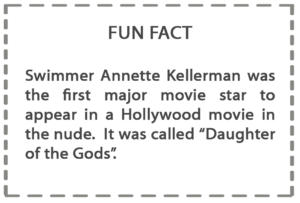

 BICYCLING
BICYCLING
- The bicycle costume began as a wool “suit” with bodice, blouse or corset cover, full corset with side gussets for movement, & a matching skirt with huge hat.
- Bicycle “suits” began to be made of lighter fabrics like cotton, & the split skirt which had already developed for riding horseback
- Bicycle costumes finally became the over tunic & bloomers Amelia had proposed almost 50 years earlier
- They evolved from the use of heavy woolen fabrics with woolen stockings into lighter weight cottons & linens
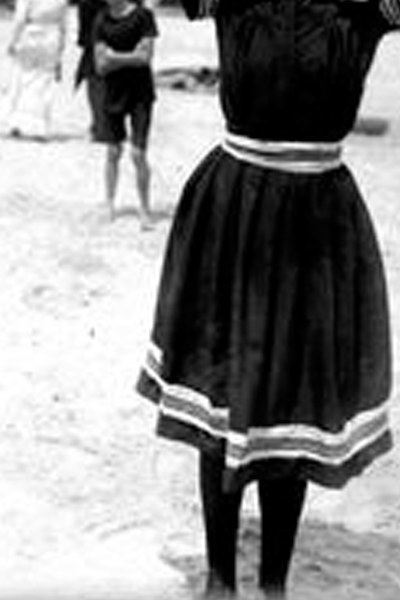 SWIMMING
SWIMMING
- Swimming, bathing, & other seaside activities were greatly popular in the 1880’s & 1890’s for those who had access to water
- The wealthy traveled to seaside spots just for social class visibility, & often never got in the water, so most were happy with the early swimming suits that covered them from neck to toe
- Almost all active wear “costumes” including swimwear in the beginning were made of blue or grey wool or serge
- The heavy wool used for gym suits came from the “reform” movement & the philosophy that natural fabrics were healthier; thus people of the day assumed a swim suit made of wool must be the healthiest of all since it was next to the skin
- Real women swimmers, however, dismissed the heavy woolen “sailor suits” & appeared in public for the first time in bathing suits made from new, lightweight knits. They were all arrested
- Swimwear evolved much the same into what we would refer to as a “sailor suit” made of light & breathable – though stiff & figure hiding – cottons
- Swimwear eventually became more fitted to the body, & made of the newly innovated knit fabrics that could bend & stretch easily
- In 1907 Australian professional swimmer, vaudeville star, film actress, writer, & business owner Annette Kellerman wore a 1-piece knit bathing costume instead of the then-accepted pantaloons
- Annette was allowed to swim the river in London, but was arrested in Boston in the same outfit
- There is argument whether her suit had cap sleeves & tights at the time, or if she appeared nearly nude
- Ms. Kellerman introduced the sport of synchronized swimming, & appeared in movies with aquatic themes
- In a movie called “Daughter of the Gods”, she was the first major actress to appear nude in a Hollywood production
- An advocate of health, fitness, & natural beauty, Annette changed women’s concepts of showing their bodies in public forever
 MOTORING
MOTORING
- Women rode in motor cars
- The automobile of 1910 could go 15 mph, so goggles were needed to keep dust out of eyes
- Boots were needed for when you broke down in the country
- Duster coats, scarves, thick veils, & protective coverings for riding in cars to keep the oil smuts off
- Loose topcoats were made of leather
- Driving coats were of specially manufactured fabrics made by companies Burberry & Aquascutum for warmth & protection in cars
- LL Bean introduced rubber boots with leather uppers for active wear in 1912

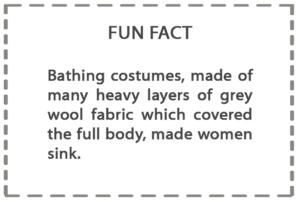

—— SPECIFIC FASHIONS ——
THE SILHOUETTE
- By the 1890’s & until 1910, the gored skirt looked more tailored & matched the jacket style which followed the changing silhouette of the time
- In 1895 in particular, the tiny sashed or belted waist was balanced out above by giant sleeve heads, & below by a simple flaring skirt
- The jacket, shirt-waist, & skirt would evolve into “waist-less” straight garments by 1914
- The concept of the jacket, skirt, blouse/shirt-waist, belt & well-tailored lapels & details would remain despite changes in the silhouette or line of each era
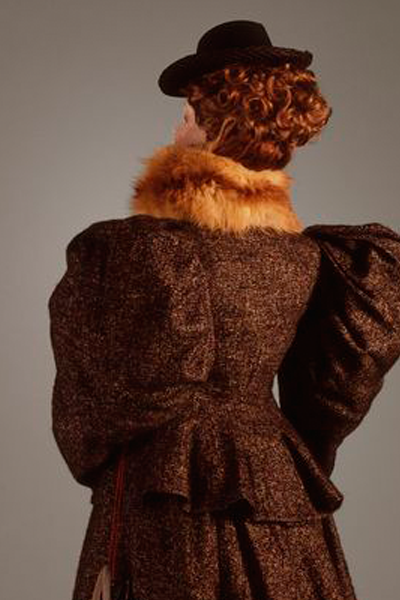 JACKETS
JACKETS
- Initially , in the 1880’s a “suit” jacket was tailored & worn with a draped bustle skirt
- The English tailors Redfern had taken the concept of the 2-part ensemble with fitted bodice & skirt, & made it into amore uniform look
- “Suit” in the beginning typically meant a fitted bodice which followed the silhouette of the day, above a matching skirt which also had the profile of the day
- The total ensemble of Redfern’s “Tailor-Made” suit came to mean a coat & skirt, worn with a blouse in the 1890’s to 1900
- Early suits could have matching or contrasting fabrics for skirt & jacket
- They did not create an overall image, but still looked like a dress with jacket
- The longer line of the jacket continued to be developed as time went on
- This long, powerful line distinguished the suits of the day from previous & later versions
- Later the skirt always matched the jacket, & it made one long visual line
- The jacket profile became straighter & less waisted towards 1910
- The short bolero, worn instead of the full jacket, was popular in Western & Southern US regions
- Boleros were short sleeveless & collarless vests that covered the top of the torso down to only about the ribcage
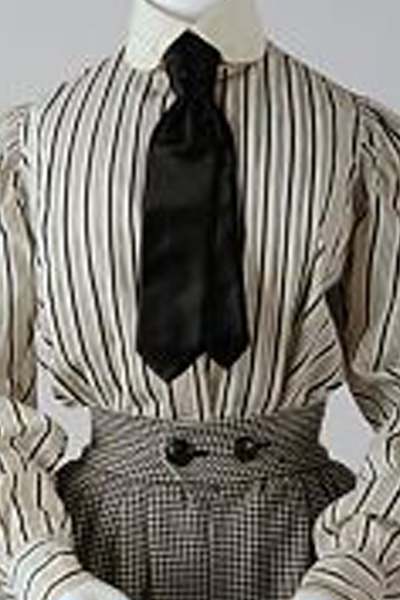 SHIRT WAISTS & BLOUSES
SHIRT WAISTS & BLOUSES
- The “shirt waist” was an invention of multiple fashion houses, & evolved from the “corset cover” which was a sleeveless or short sleeved blouse that was often seen on the outside of the garment
- The “shirt waist” in contrast to the tailored, thicker, & often darker in color suit was always of a light, gauzy fabric
- Lawn, voile, handkerchief linen, or silk or taffeta for dress occasions were favorite fabrics for “shirt waists”
- “Revers” & chemisettes, worn in previous eras & through this era, were like false fronts of a blouse. These were worn with the first suits, & preceded the full “shirt waist” (later called blouse) concept
- “Shirt waists” followed the profile & silhouette of the day
- In the 1880’s to ’90’s they had multiple tucks down the front with rows of buttons which ended in a standing collar
- 1890 to 1900 saw the blouses loosen significantly so they were more gathered at a smaller standing collared neck. The fullness would expand towards the waist, where a wide belt or sash would gather it in to the stylish below waist profile
- Consistent with Edwardian style, many “shirt waists” for suits around 1900 were very lacy & ornamented with ruffles, pleats, tucks, & pearl buttons
- As the 1910 style evolved into the long waisted & long corseted look, the suit “shirt waist” followed the same line
- These were of the same light & gauzy fabrics as the dresses, & many were of beautiful colors in silks & cottons, as well as the new synthetic fabrics
- “Shirt waists” of the 1910-1914 period were often of woven or printed patterns worn under a plain but beautifully richly colored suit jacket with skirt
- Asian and Eastern influences which had affected fabrics & patterns of “Art Nouveau” & “La Belle Epoque” were seen in the lovely loose draping & colors of the “shirt waist” of this later period
- Removable collars & cuffs had been worn throughout the Edwardian period. They were not necessary after the “shirt waist” replaced them as an entire blouse garment with its own collar & cuffs
- Necklines were consistent with the dress necklines. At first they were buttoned with high collars
- As necklines dropped to the “V” and square or rounded shape for the dress, they also did for the “shirt waist”
- Eventually sportswear such as tennis dresses would replace the suited “shirt waist” to become the entire tunic dress
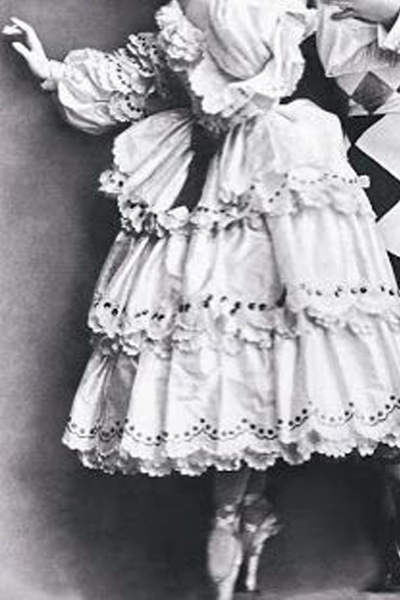 UNDERGARMENTS
UNDERGARMENTS
PETTICOATS, CORSETS, & BRASSIERES
- In 1902 it was considered vulgar to hear your petticoat, but at last it was permitted to be SEEN
- Petticoats were worn less & less from 1899 to 1914 in favor of underlinings, double fabrics, & long corsets
- The growing interest of women for sports & women entering the work force made comfortable, moveable, & breathable clothing necessary for all classes
- Designers responded to women’s increased activity by modifying clothing design plus production techniques in both custom & mass production
- The corset industry in particular responded by creating multiple types of corsets for specific needs & for specific body types
- Even corsets being mass produced had a large variety of shapes, purposes, sizes, & modifications to meet individual needs
- Catalog corset sales were a BIG business
- There were many, many corsets available of every type for every activity from active sports & special riding or health corsets, to handmade boudoir silks worn by performers (with nothing else) on stage
- By 1909 beneath the new straight gowns, women wore corsets that began under the bust & extended well down over the hips
- The fashion objective starting in about 1904 & with momentum in 1909 was a long, columnar line, so corsetry was less focused on restricting the waist & more on smoothing the hip
- The new everyday undergarment became the “brassiere”, with an era of relative freedom from understructure until the rubber girdle
- “Bust bodices” or “brassieres” supported the bust for those who did not wear a corset
- In 1910, early Brassieres looked somewhat like corset covers – sleeveless, white cotton garments that ended anywhere between the bottom of the bust & the waist
- They could be boned or unboned, depending on the amount of support needed
- These provided a soft foundation that could go higher than the Edwardian monobosum, but still lower than our modern silhouette
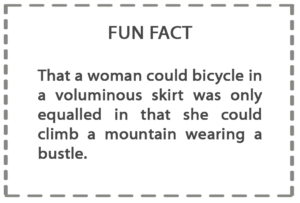

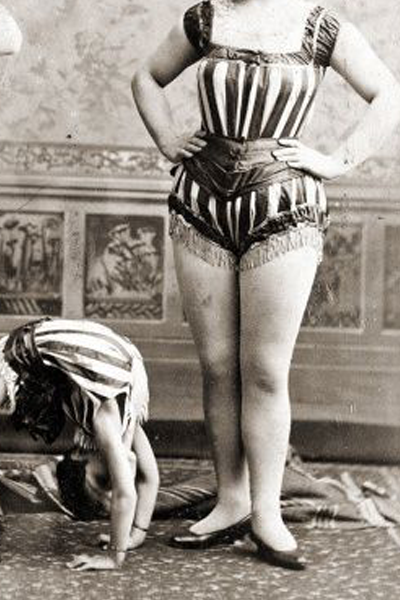 DRAWERS & CHEMISE COMBINATIONS
DRAWERS & CHEMISE COMBINATIONS
- Undergarments for activewear were much the same as for fashion
- Suit undergarments were the same as per the fashion silhoutte of the day
- Specialty activewear would have a modified version of chemise, drawers, or combination
- Activewear, other than suits, did not typically wear a petticoat
- Drawers & chemises were combined in 1877 & called “combinations
- By 1890 the chemise & drawers were replaced by combinations entirely, because they reduced bulk around the waist where women were aiming for a completely smooth line from chest to knee
- A combination was a camisole with attached knee or calf length drawers
- Combinations were worn under the corset, bustle, & petticoat
- Woolen combinations were recommended at the time for health, especially when engaging in fashionable sports
- The old knickers persisted; sometimes in wool or even chamois leather for sports
- Both new & old styles of knickers fastened in the back or at the sides with 1-2 plackets, or with a falling back flap which buttoned at the waistband
- As with ordinary drawers, the combination or one-piece left the crotch seam open
- Flap-fastening drawers were closed at the crotch seam under sporting costumes
- Combinations were worn even under swimwear until 1907 when they swimwear was made of tight knits
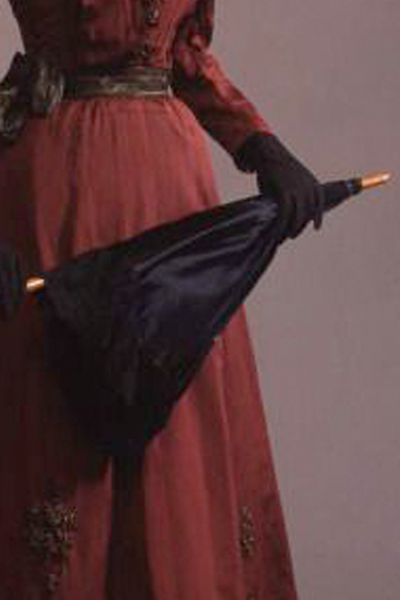 FABRICS & COLORS
FABRICS & COLORS
- Early traveling & work wear suits were in cottons, wools, & especially wool serge
- Designers added more fabric choices & colors quickly in response to demand for traveling suits
- “Tailor-Made” suits were ideal for traveling, & became more versatile, so more fabric choices were added
- Heavier fabrics like tweeds & serge became popular for every day work or wear in the country
- Further innovations & variety of fabric & design were added to make suits “suited” for formal affairs like weddings
- Heavier fabrics like wool, tweed & serge were expanded upon using lighter weaves for suits worn for everyday work or wear in the country
- Higher end suits might be blends of natural fibers such as cashmere
- The new synthetic dyes could be used, but the natural fibers lent themselves well to natural dyes, so colors tended to be more “natural” than what was being used in light gowns & other types of day wear
- Suits of the 1870’s into the ’80’s favored lighter colors of beige, tan, light gray, & a variety of greens & blues
- Suits of the 1880’s into 1900 were much darker & included blacks & grays, dark browns, deep olives, dark burgundies, & shades of navy or teal blue
- Suits were especially darker & heavier overall in appearance than all the other Edwardian & “Belle Epoque” trends
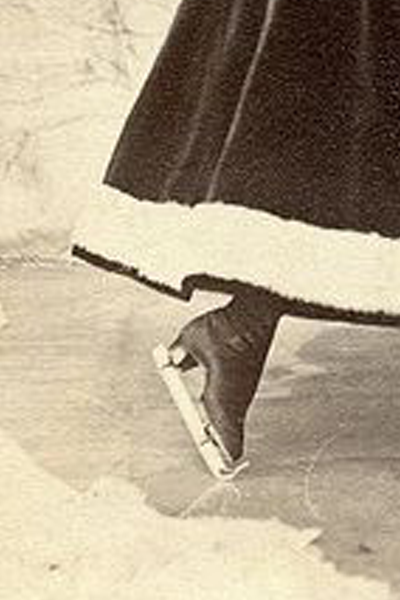 AND SO/SEW FORTH
AND SO/SEW FORTH
- Collars & cuffs were still used, although with the introduction of the “shirt waist”, they became redundant
- Belts were either straight or had a slight V at the center front pointing down
- Belts were made of leather, or of a contrasting fabric, often black or brown
- Washable kid gloves were worn everywhere
- Suede & silk embroidered gloves were worn for formal occasions
- Ladies carried little money as goods were always charged to accounts & minimal make up was used, so they didn’t need large handbags
- Small dainty decorative bags with a strap that hung from the wrist were sometimes used, but never handbags
- In 1913, women were finally allowed to have integrated pockets in their clothing (all prior history pockets were attached or hung on the body)

—— ACTUAL GARMENTS FROM ERA ——
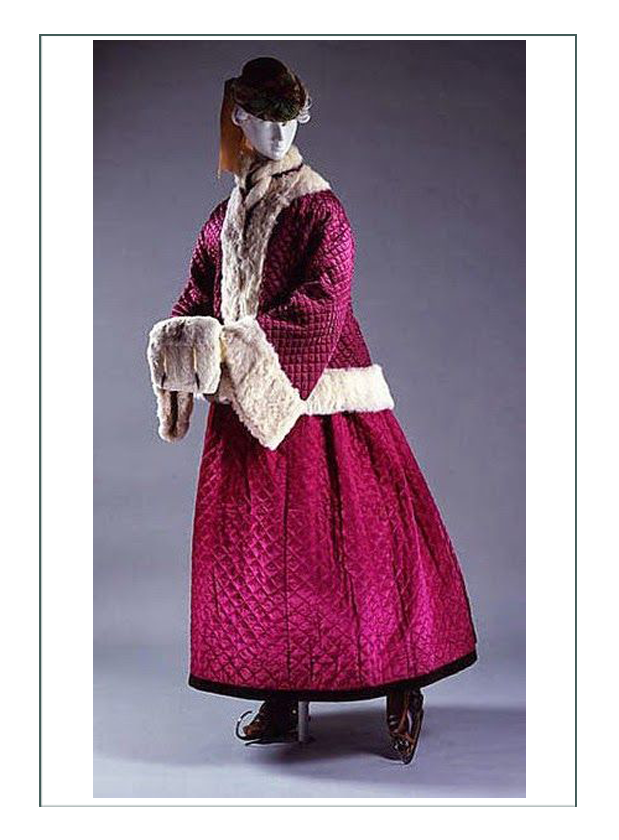
—— (above) “Quilted Skating 1863” ——
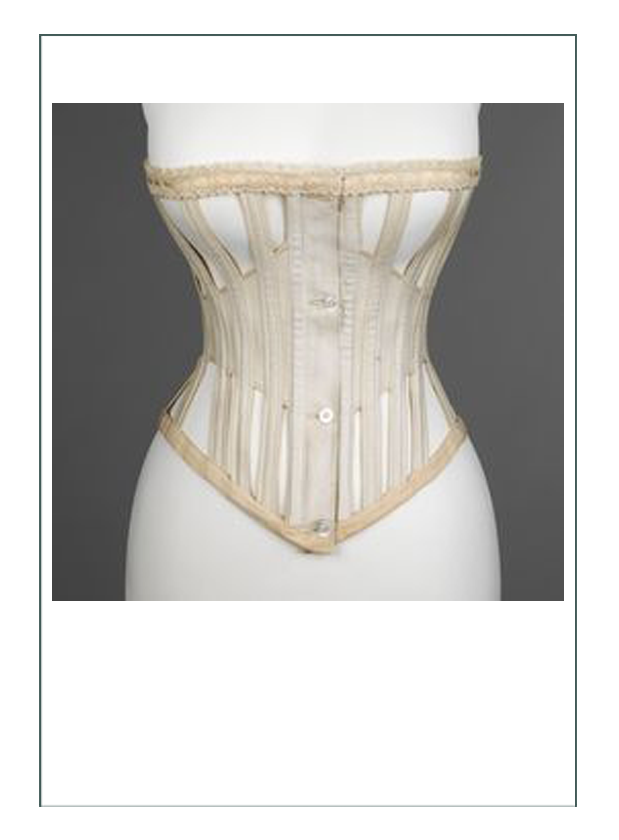
—— (above) “Breathing Sports Corset 1871-1905” ——

—— (above) “Seaside Costume 1886” ——
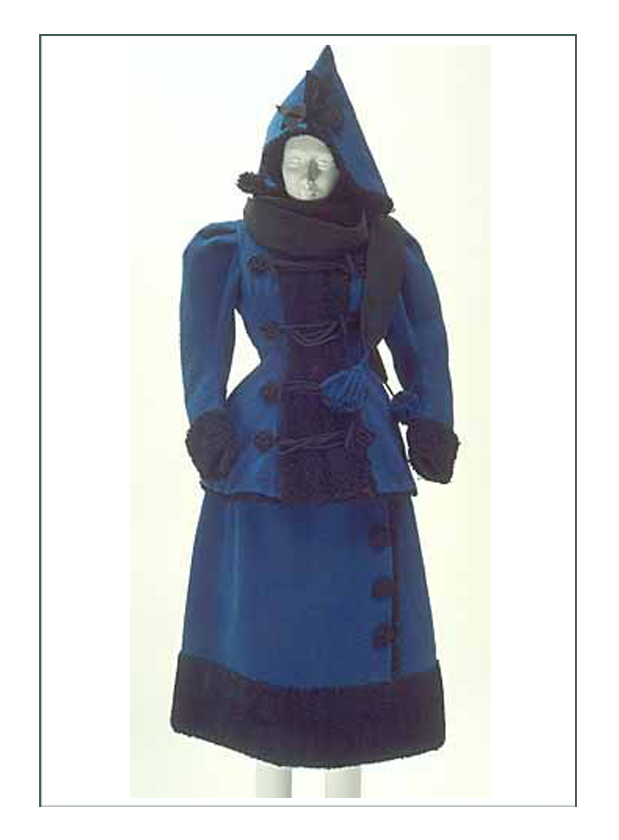
—— (above) “2 piece Winter Sports Suit 1888” ——
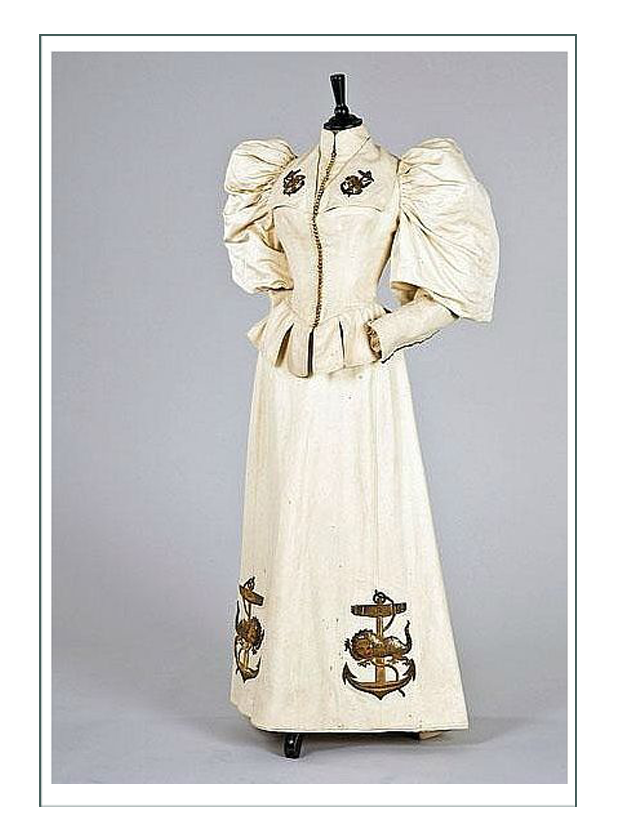
—— (above) “Yachting Suit by Redfern made 1890; altered 1895” ——
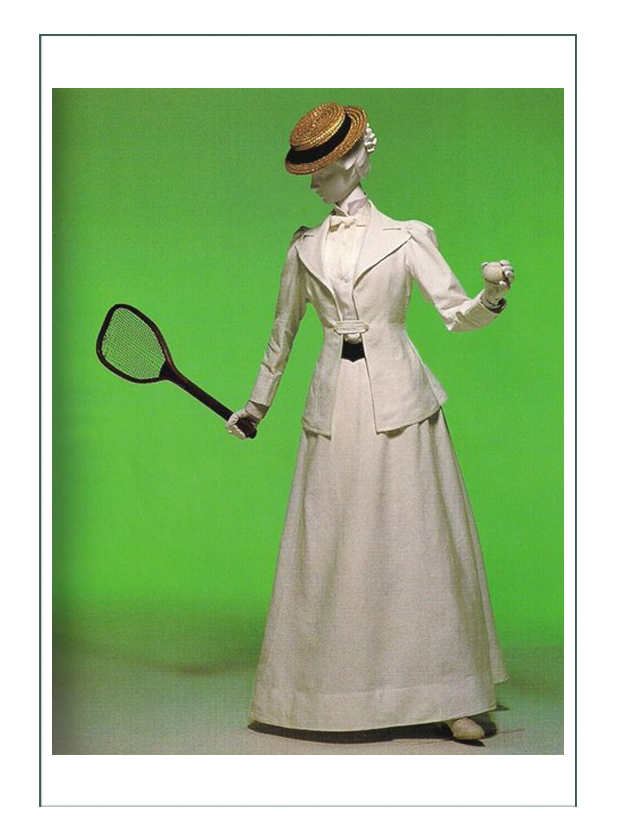
—— (above) “Tennis 1890” ——
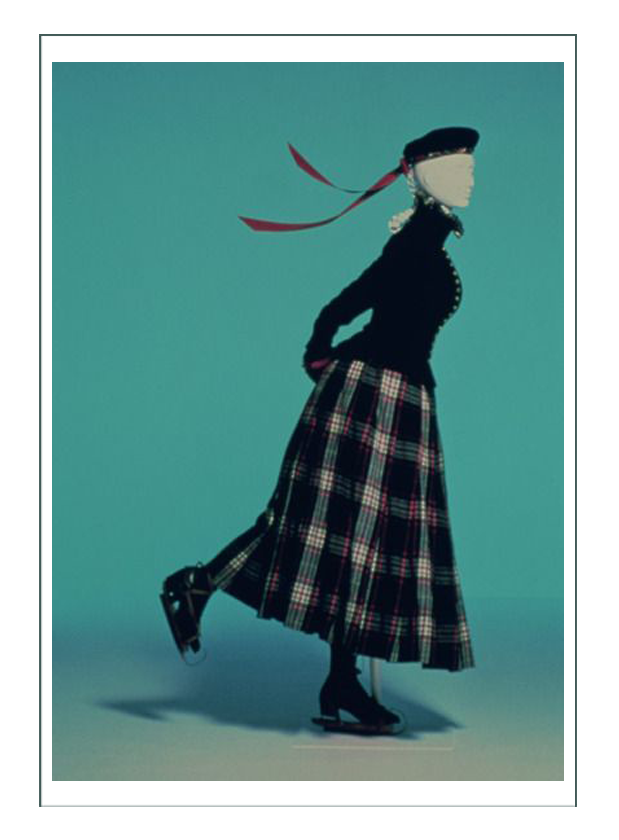
—— (above) “Competitive Skating 1890” ——
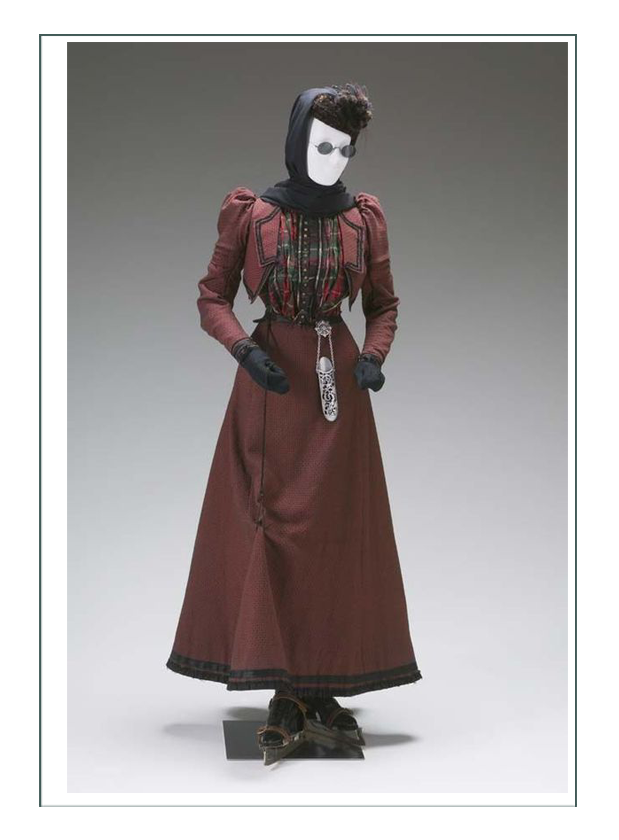
—— (above) “Ice Skating & Walking Suit 1893” ——
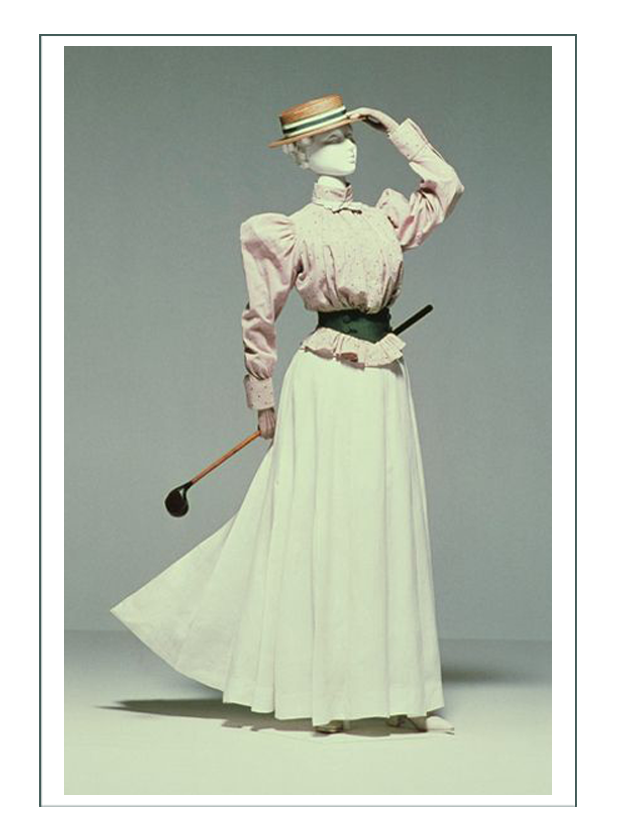
—— (above) “Golf 1895” ——
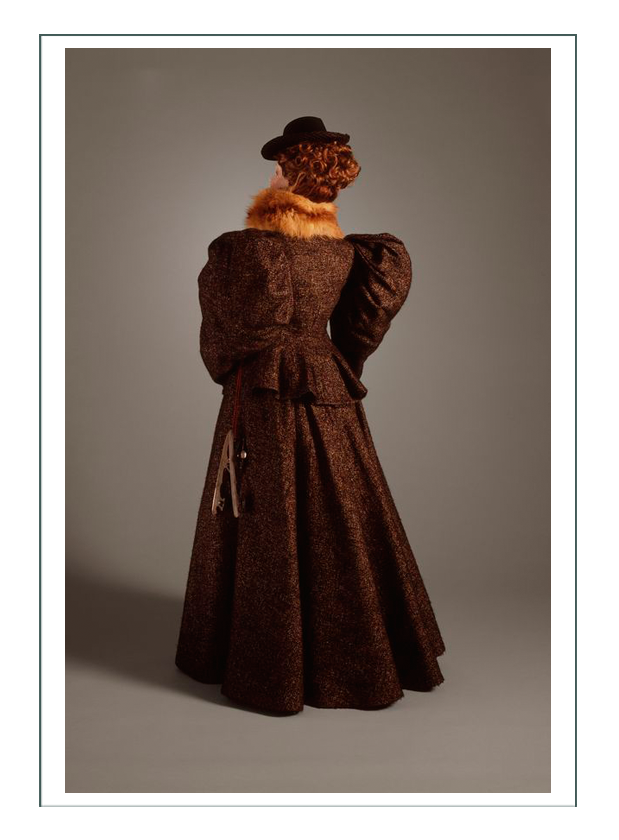
—— (above) “Wool Walking & Ice Skating (skates on hip) 1896″ ——
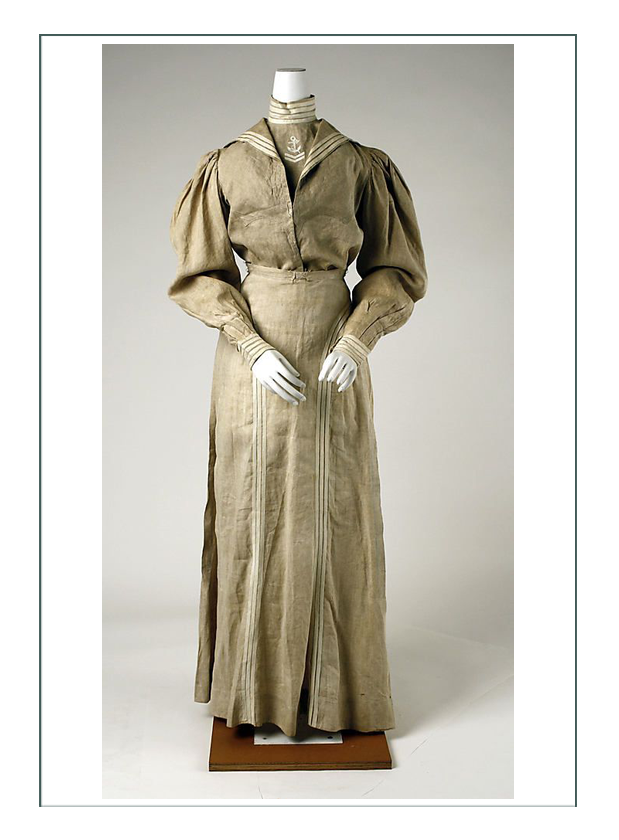
—— (above) “Sailor Suit 1896” ——
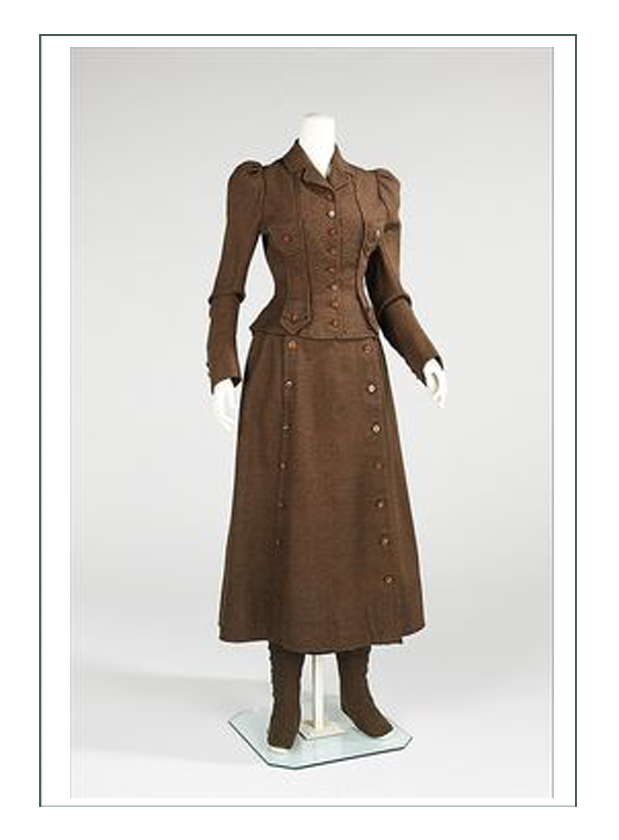
—— (above) “Cycling Suit 1898” ——
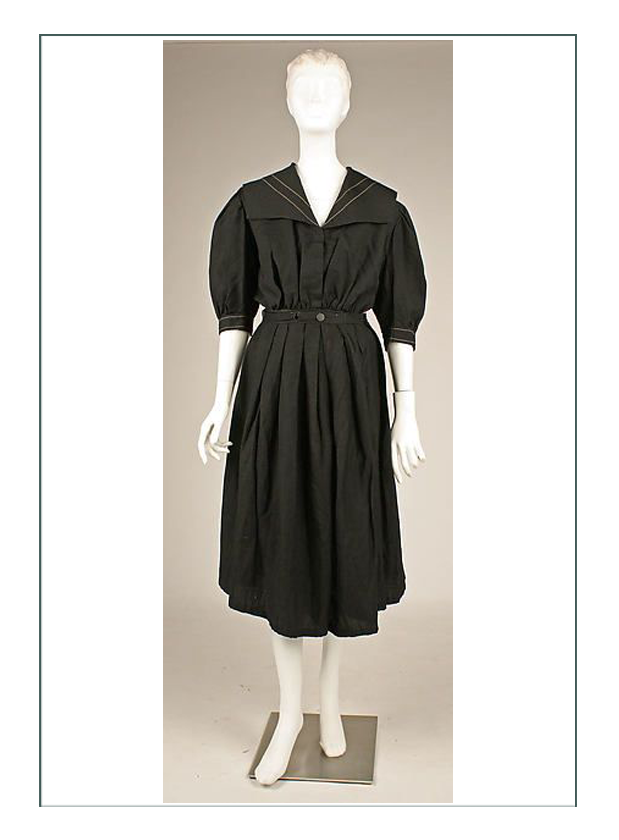
—— (above) “Gym Suit 1899” ——
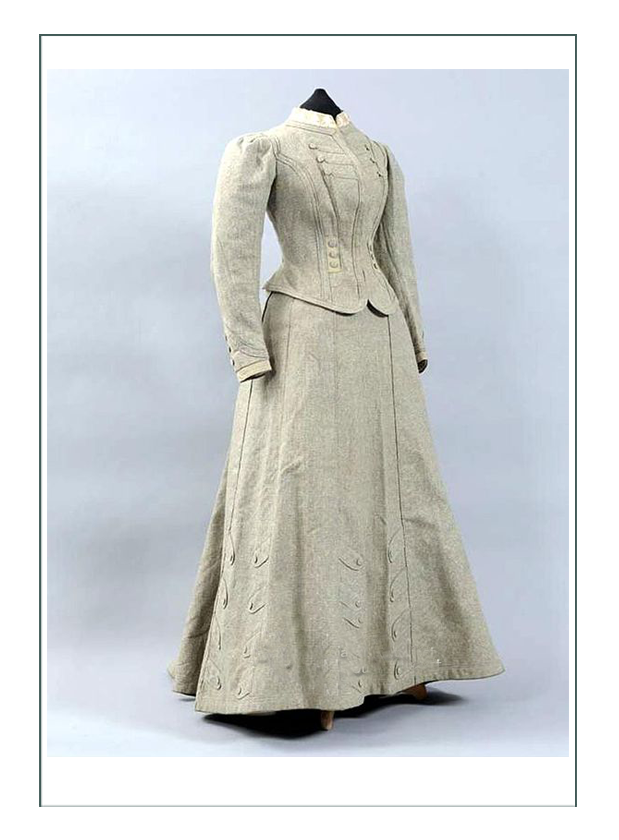
—— (above) “Tailored Wool Suit for Work 1899” ——
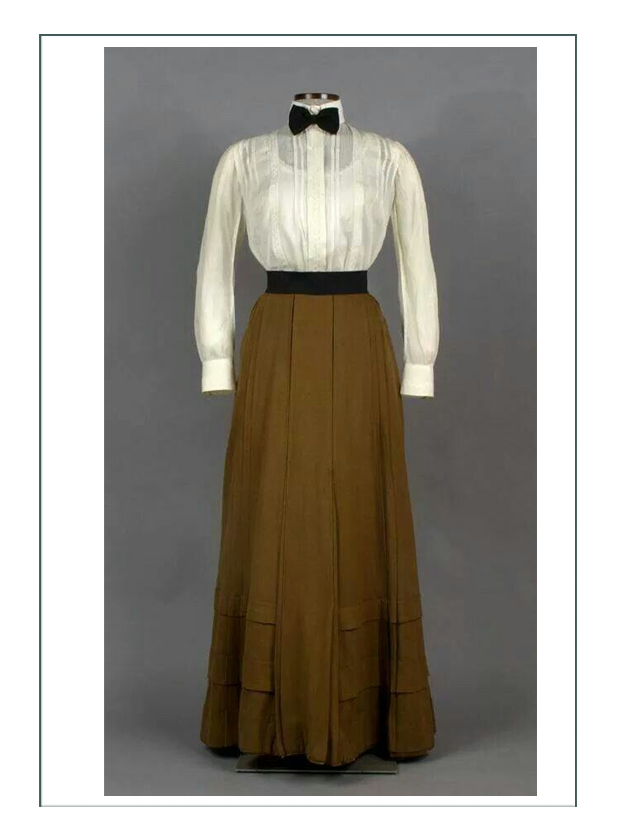
—— (above) “Work Suit with Tie 1899” ——
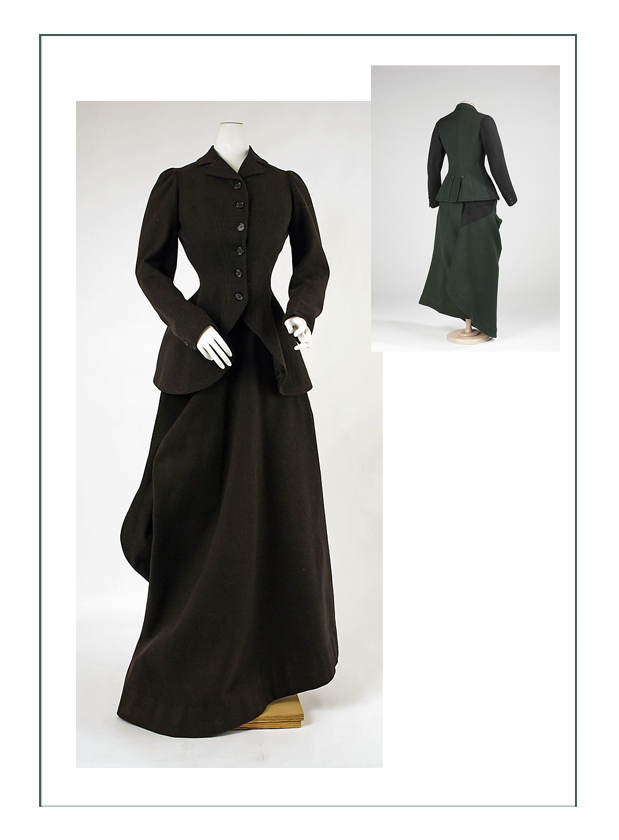
—— (above) “Wool Riding Habit 1900” ——
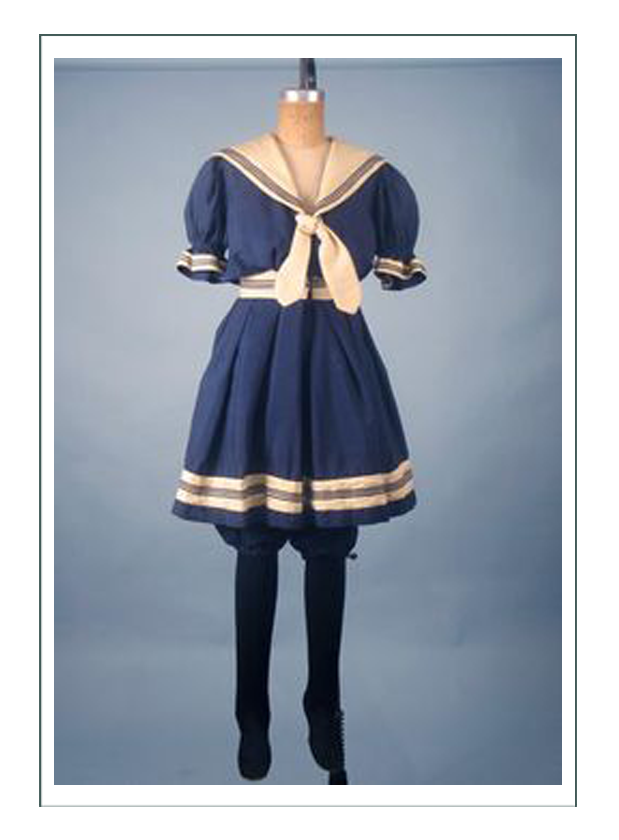
—— (above) “Bathing Costume 1900” ——

—— (above) “Swimming Suits to Swim 1900” ——
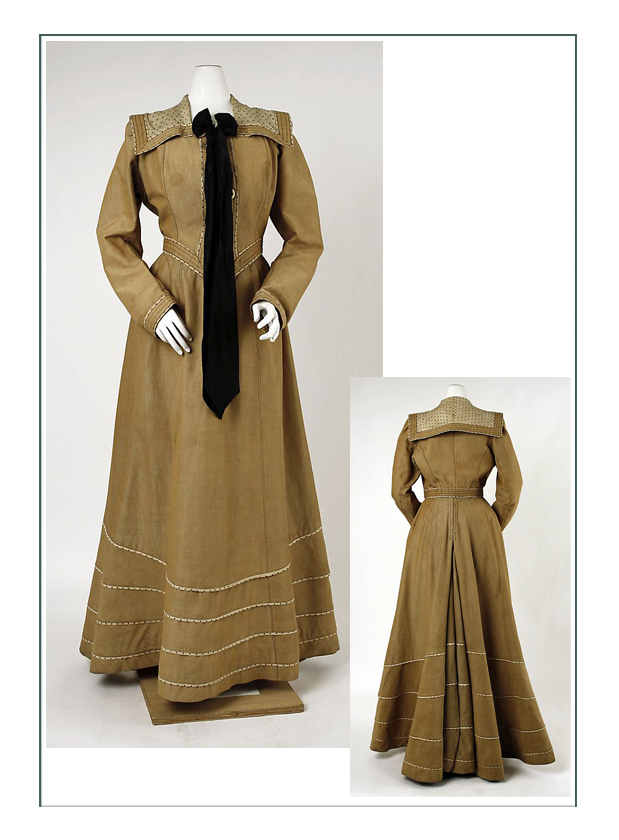
—— (above) “American Made Suit for the Office 1900” ——
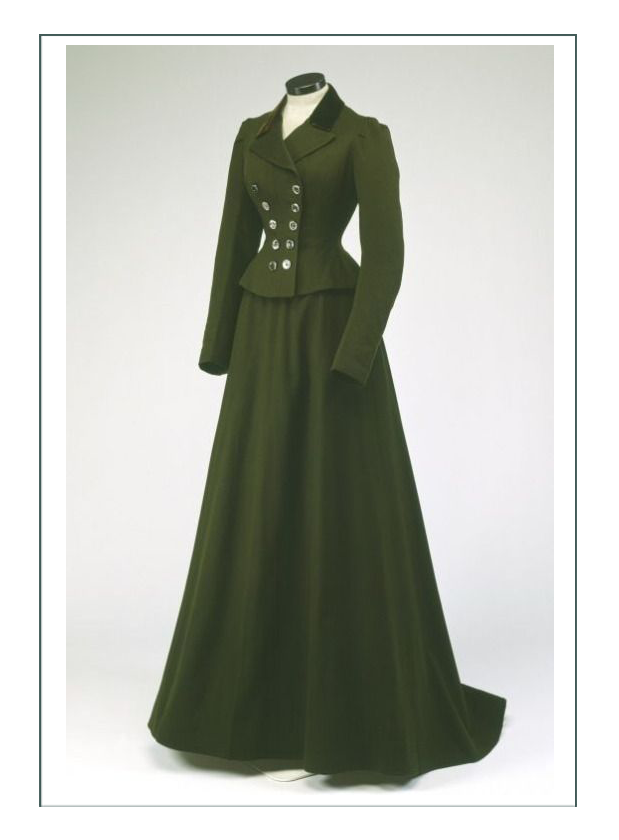
—— (above) “Wool Riding Habit 1900” ——
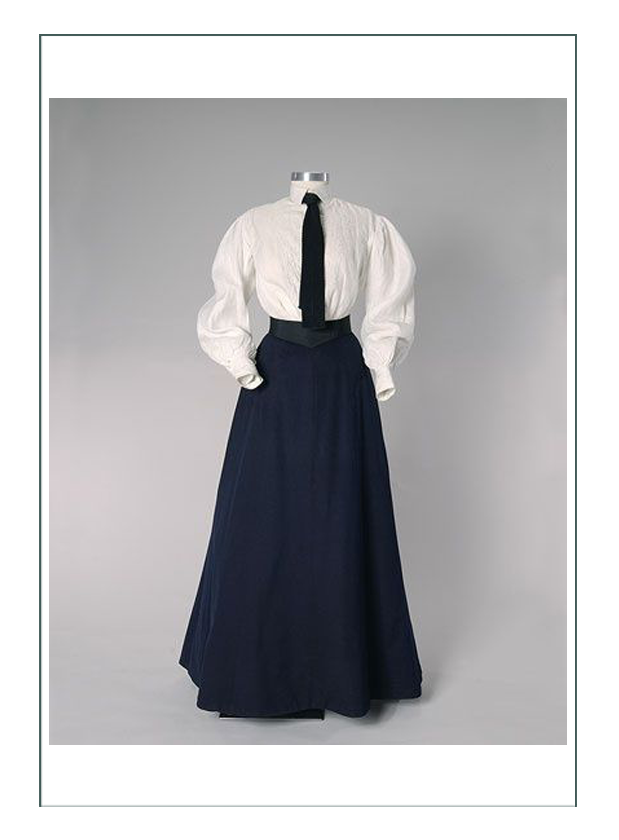
—— (above) “Shirtwaist, Skirt, & Tie Suit 1902” ——
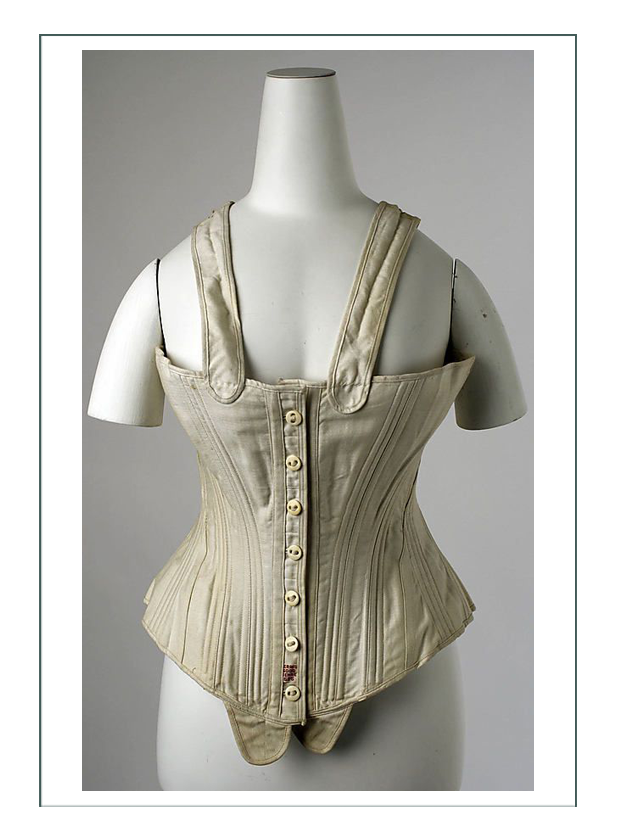
—— (above) “Tennis Corset 1902-05” ——
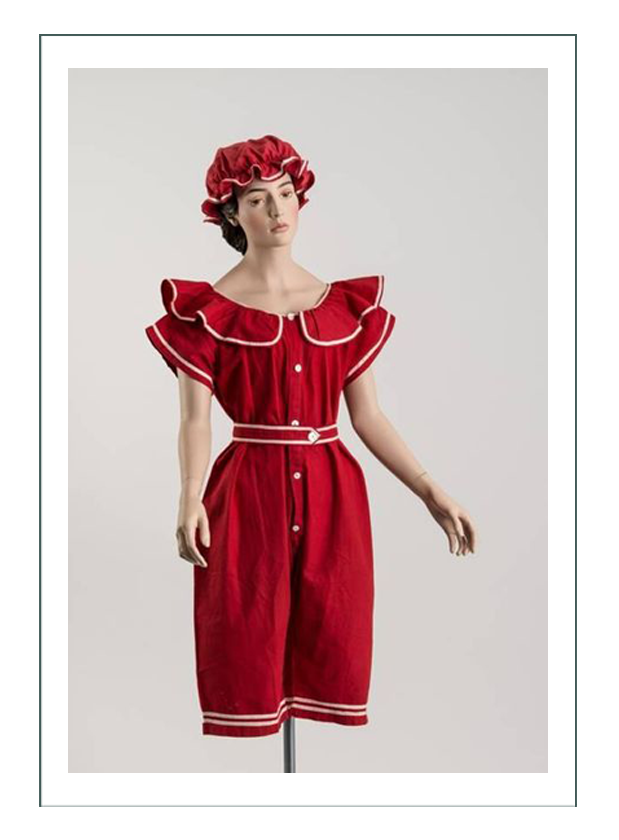
—— (above) “Bathing 1904” ——
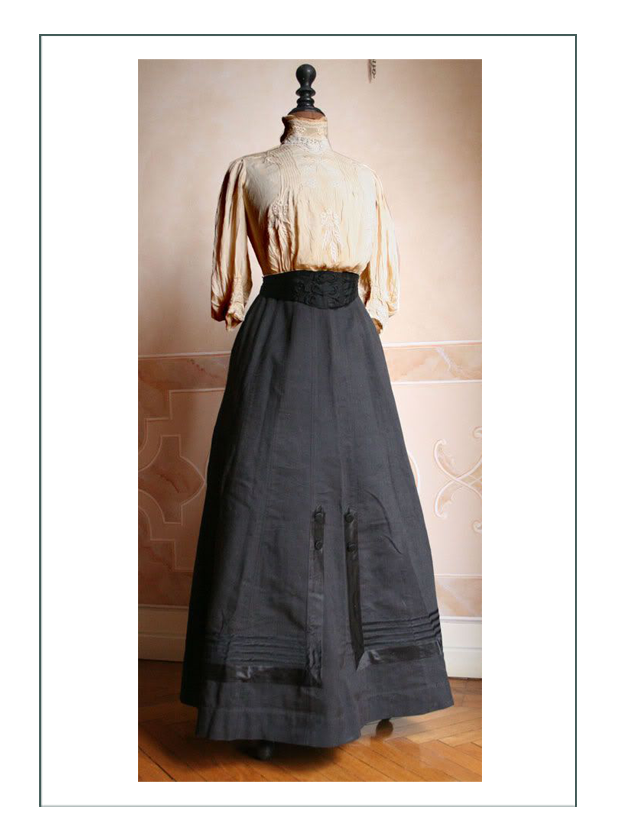
—— (above) “Skirt & Shirtwaist 1904” ——
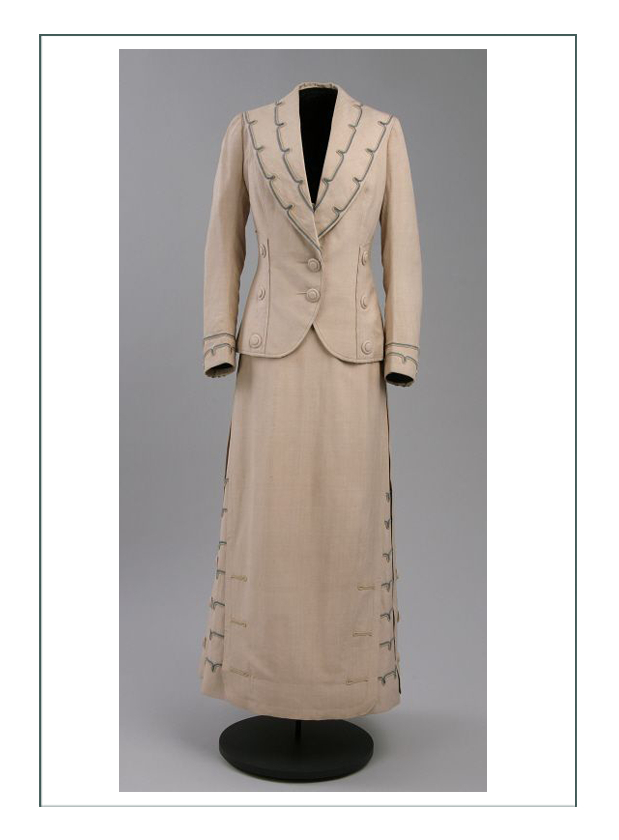
—— (above) “Suit 1904” ——
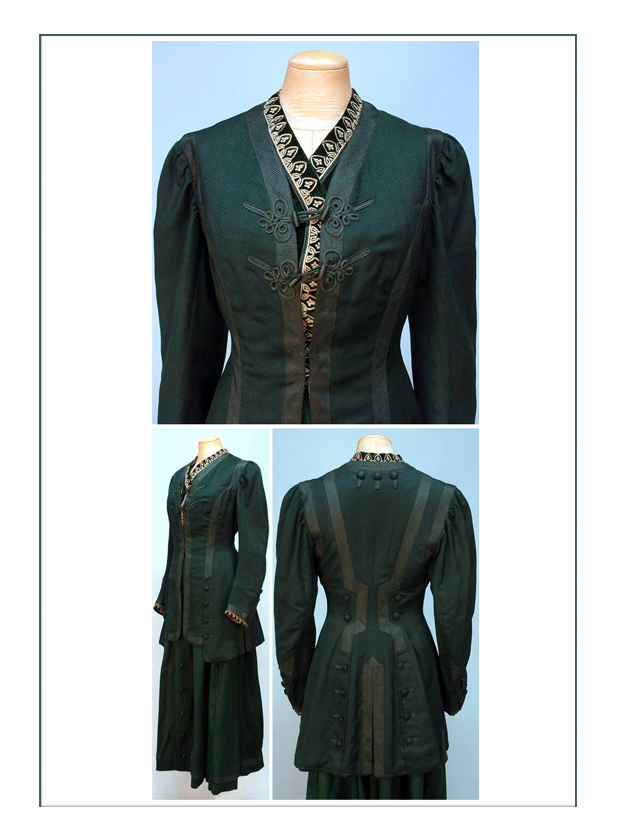
—— (above) “Walking Suit 1905” ——
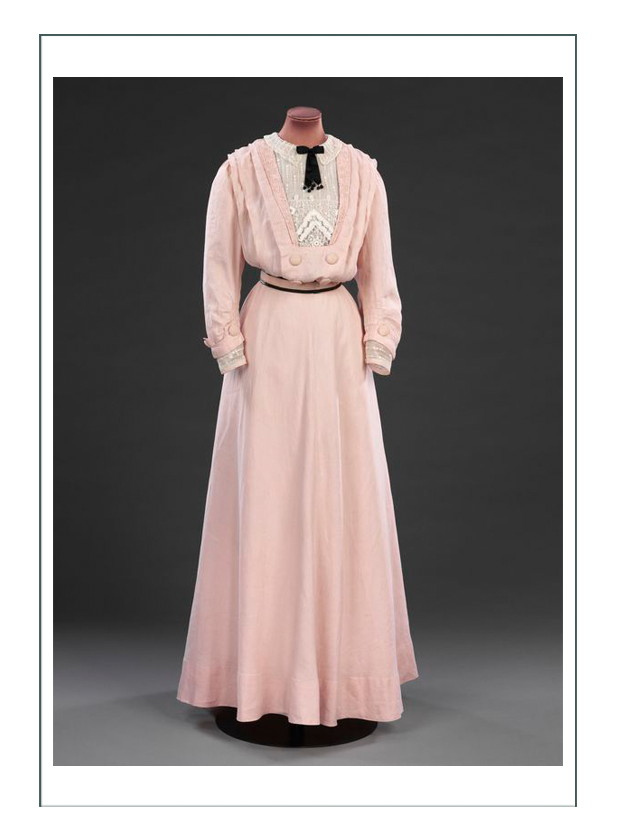
—— (above) “Yacht & Beach Costume 1905” ——
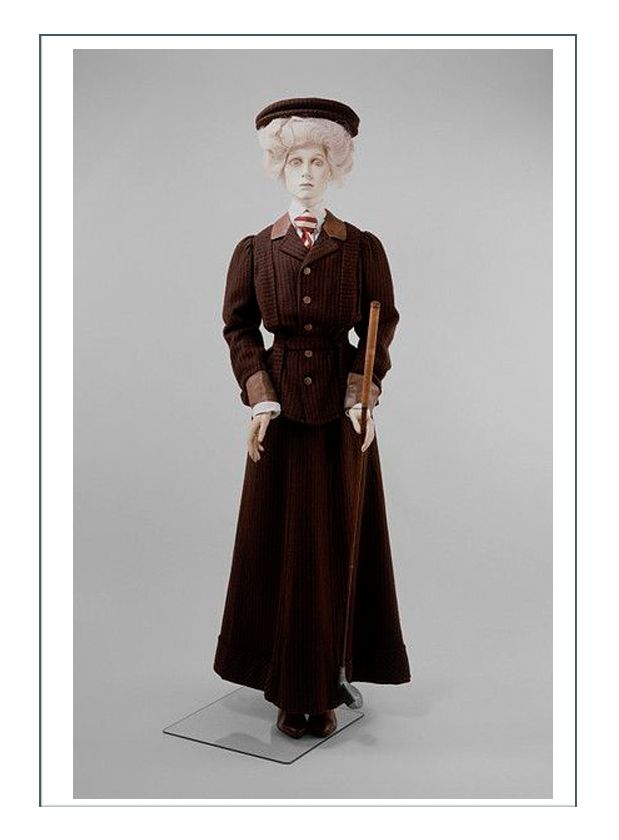
—— (above) “Golf Design by Pro Heather Firbank 1908” ——
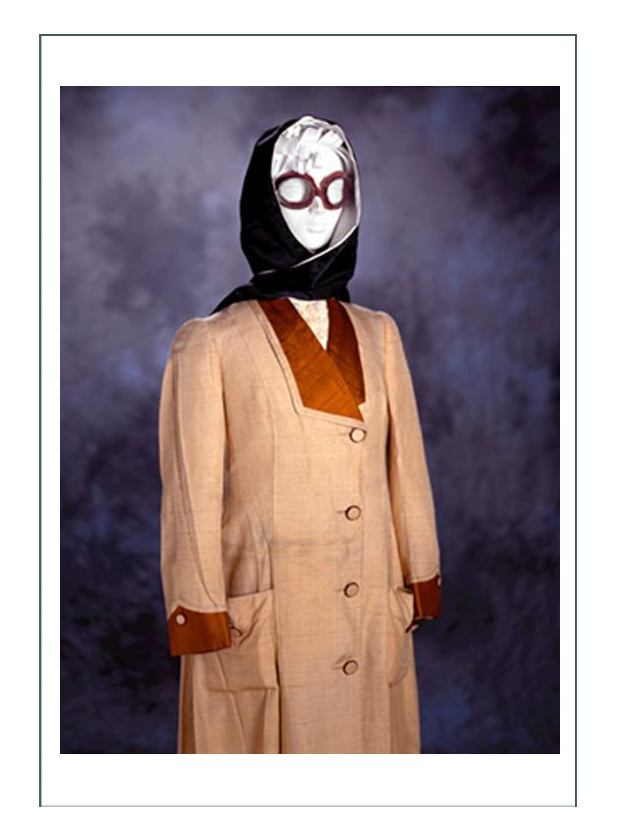
—— (above) “Motoring Costume 1908” ——
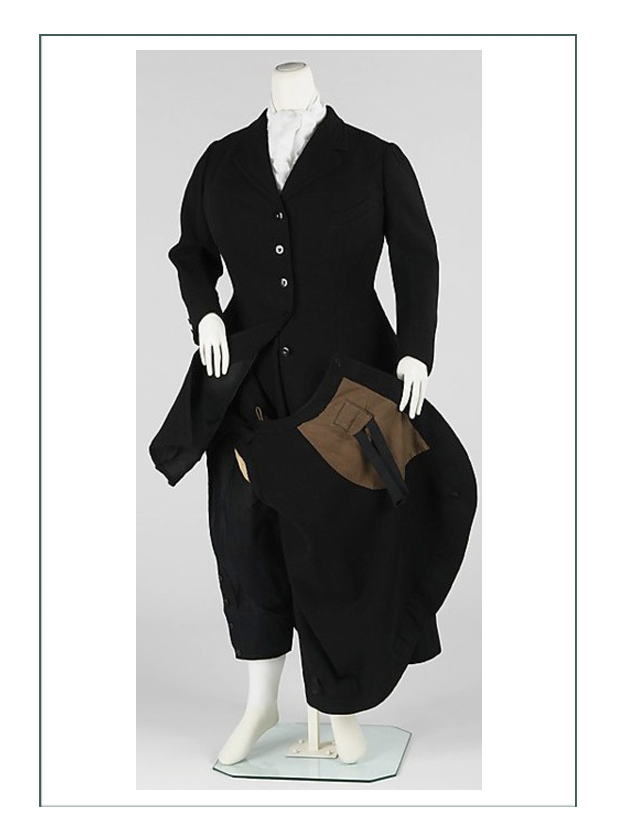
—— (above) “Horse Riding Costume 1909” ——
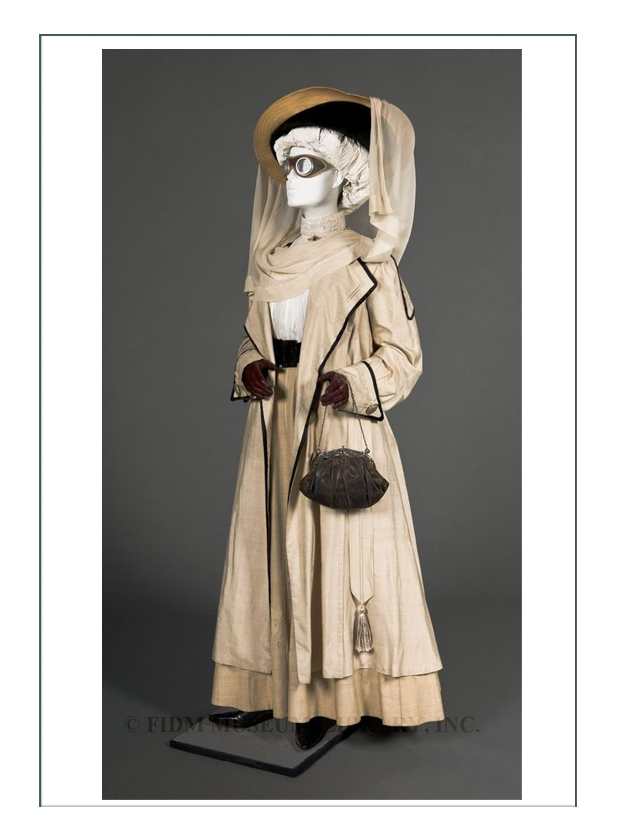
—— (above) “Motoring Duster Ensemble 1910-15” ——
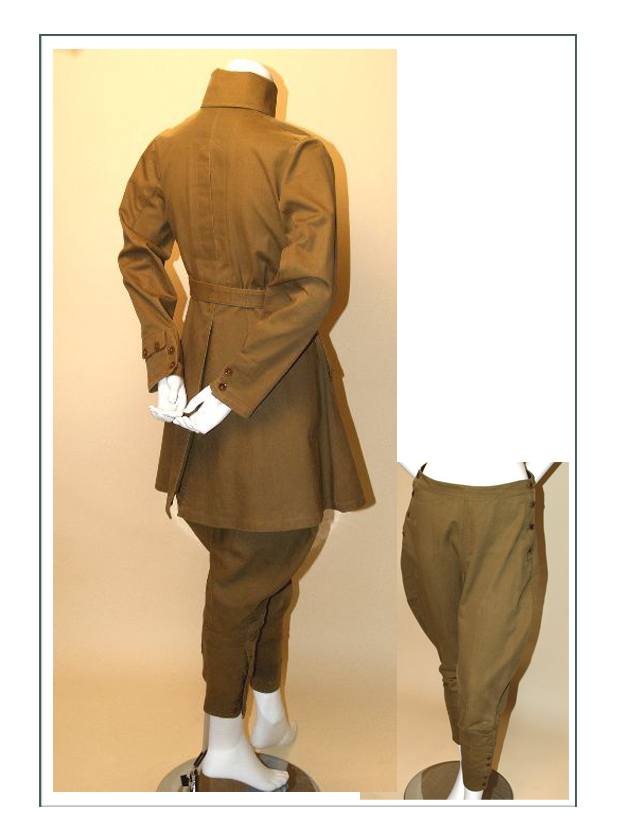
—— (above) “Jodhpers for Exploring 1910” ——
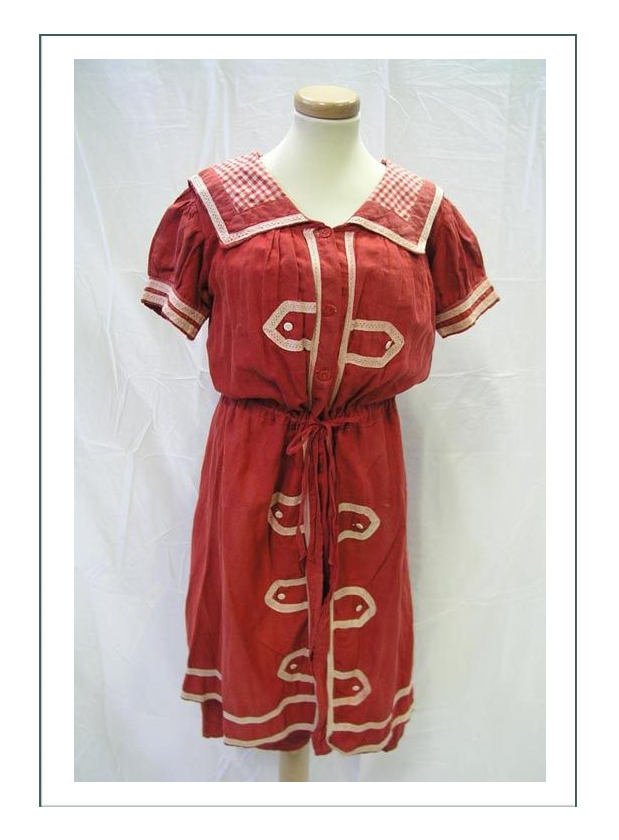
—— (above) “Bathing Costume 1910” ——
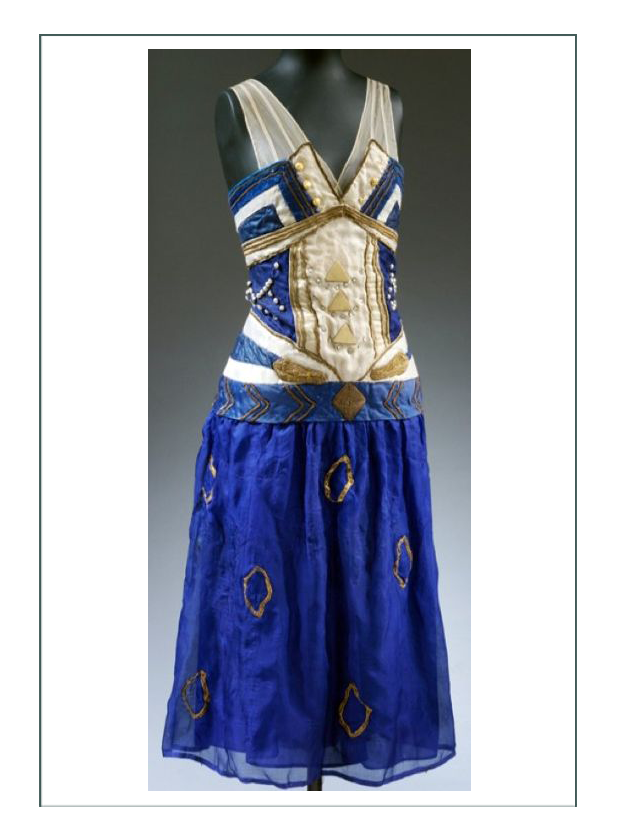
—— (above) “Ballet Russe Dance Costume 1910” ——
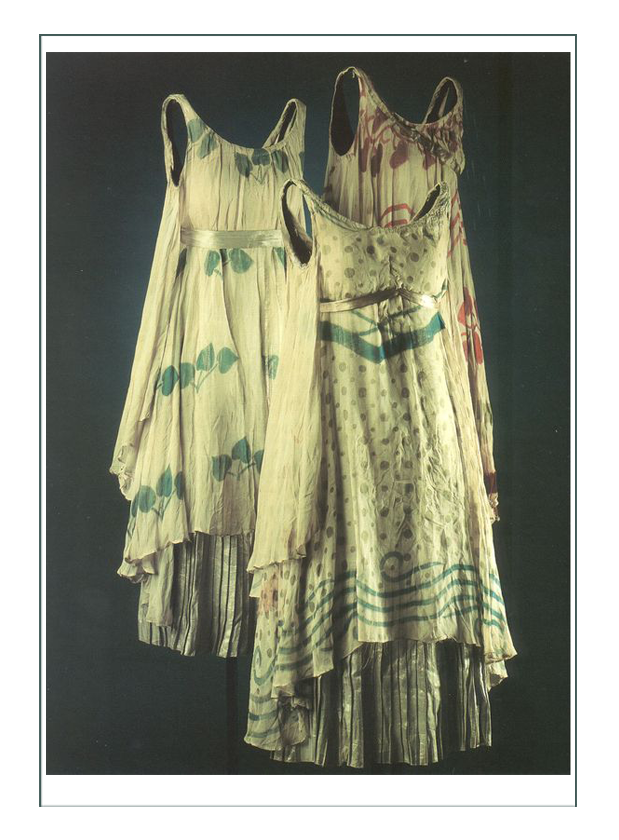
—— (above) “‘Afternoon of a Faun’ Ballet Costume 1912” ——
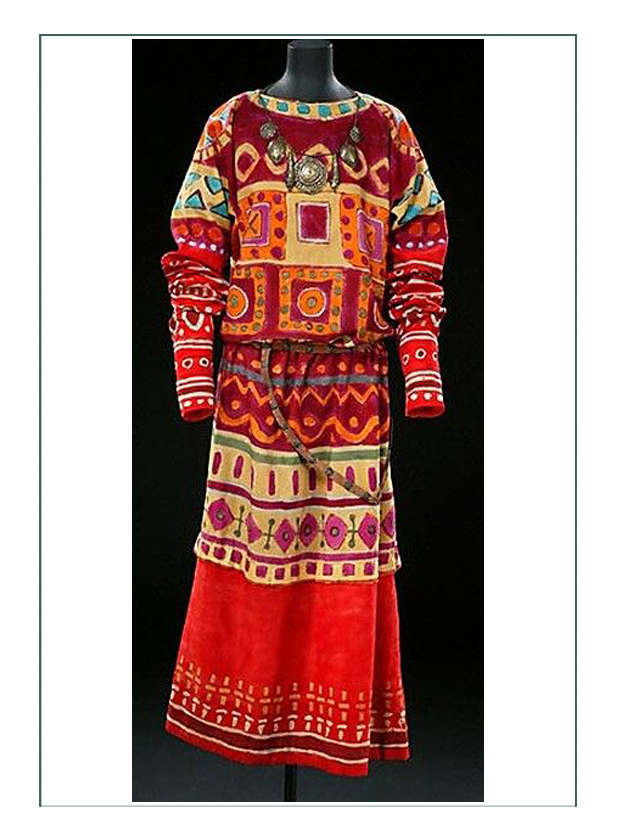
—— (above) “‘Rites of Spring’ Dance Costume 1913” ——
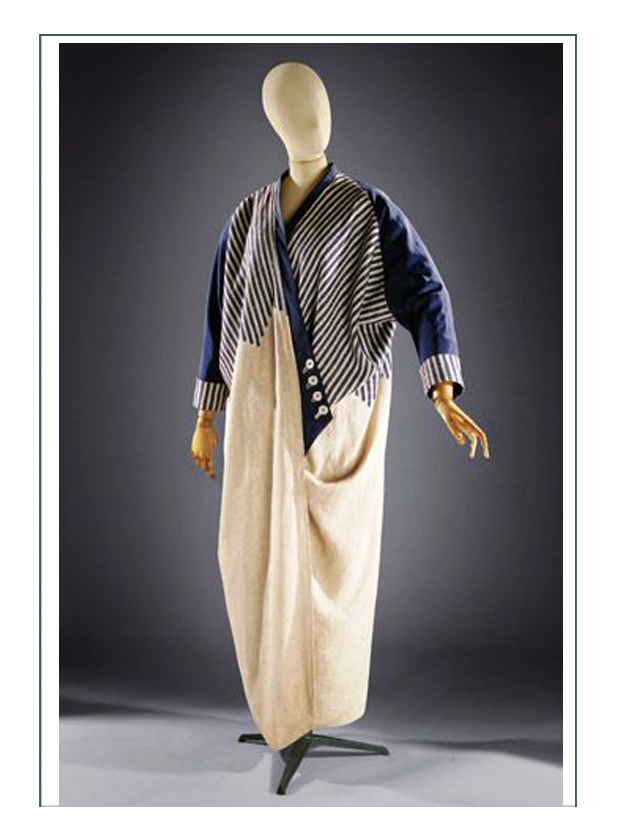
—— (above) “Forreau Car Coat 1914” ——
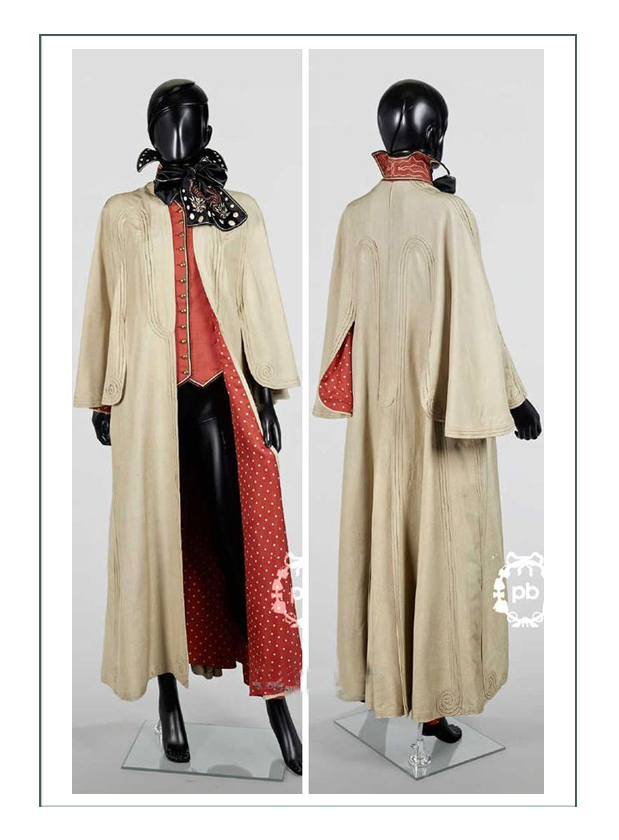
—— (above) “Parisienne Car Coat 1914” ——
Click to go to top of page
Click date below to go to a different era. We can replicate most ANY garment you see!
